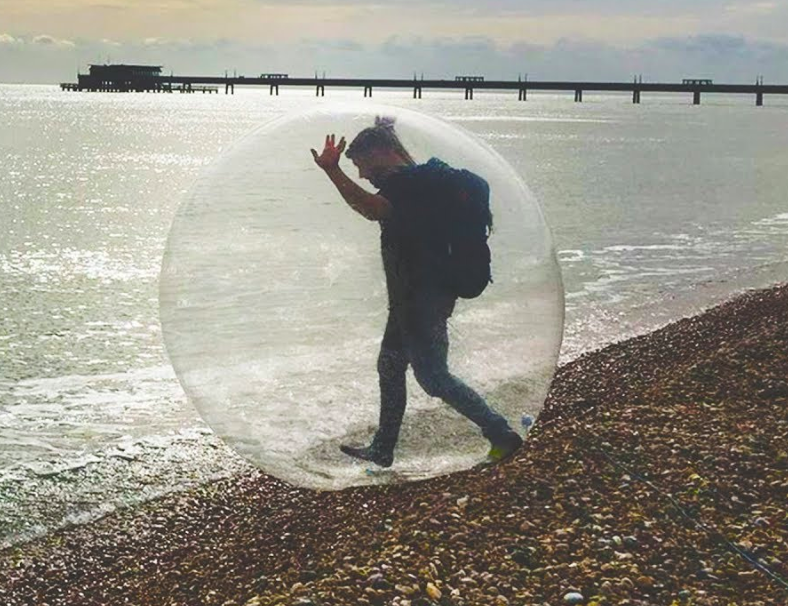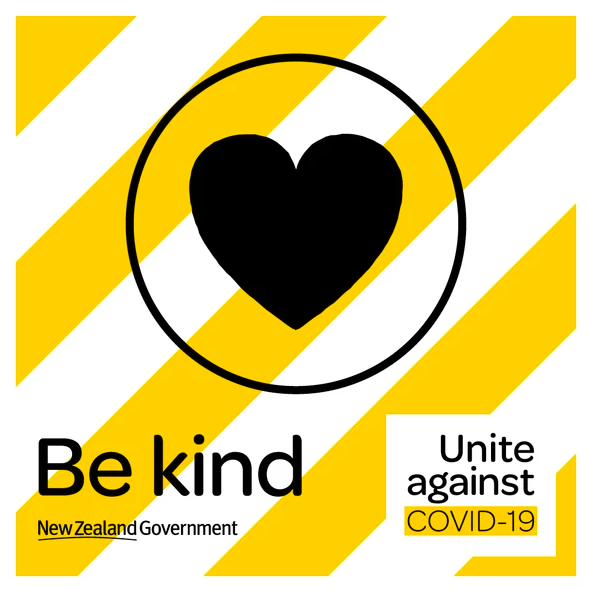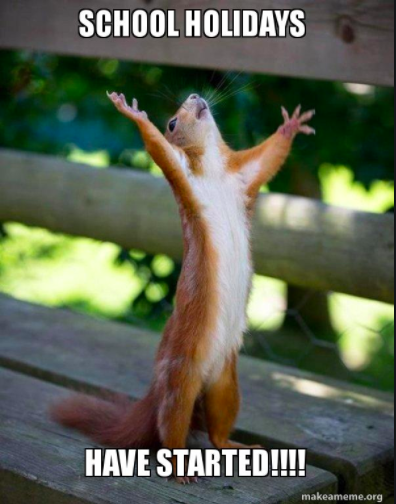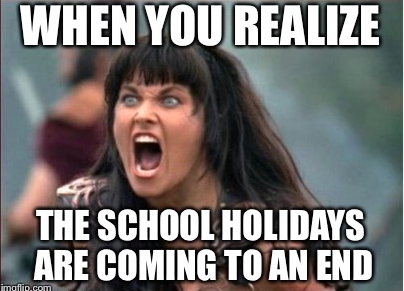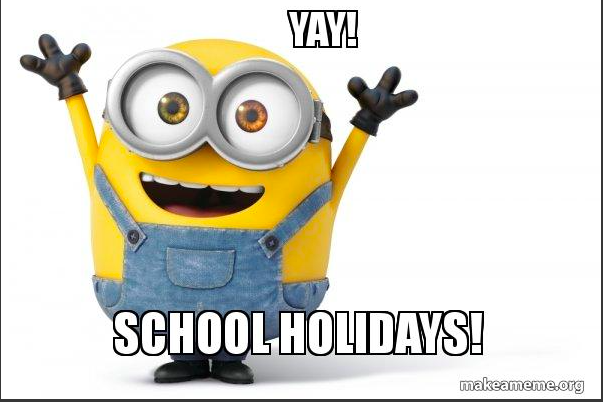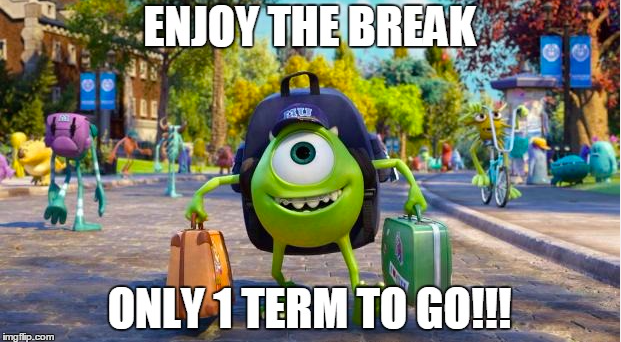8M1 Global Studies
Section outline
-

Kia ora, and welcome to your Global Studies course page for 2020. My name is Miss Wright and I will be your Global Studies teacher this year. This page is where you will be able to find all the necessary information you will require for your Global Studies course. All tasks and assessments will be placed here as well as additional lesson notes and resources. Please make it a habit to check this page at the start of each week, this will ensure that you are aware of any expectations we may have of you at that time.
Mountains staff really hope that your time here at MHJC will be full of fun and challenging activities that will see you grow as a learner. Enjoy this year and if there are any queries do come and see me or feel free to email me - swright@mhjc.school.nzThis week in Global Studies we will be learning about what we treasure in Aotearoa. Our context this term is Taonga. What dos this mean to you? What do you identify as treasures or taonga of Aotearoa? While the things we identify (physical, emotional and spiritual) may appear different, what do they have in common? Can we create categories for our Taonga?
Achievement Objectives
L3
Understand how people view and use places differently.
Understand how people make decisions about access to and use of resources.
Success Criteria: I can identify some of the taonga that are important to Aotearoa and explain why they are treasured.
Activities:
- Brainstorm taonga.
- Categorise/group taonga - identify/describe the reasons for the grouping
- Share your categorisation with a buddy - what do they notice? Are your categories similar? Are the taonga similar? Can you make a generalisation about taonga or do we need more information?
- Create a page with an image of Aotearoa in the middle, surrounded by representations of the taonga.
Homework:
Choose one of the treasures of Aotearoa you have included on your map and research who it is valued by and why. Write a paragraph to explain your findings.EXPLORE / TŪHURA learning intentions:
- We are EXPLORING taonga that are important to Aotearoa and explain why they are treasured.
- We are EXPLORING the significance of culture and identity of New Zealand
- We are EXPLORING National Identity of New Zealand
-
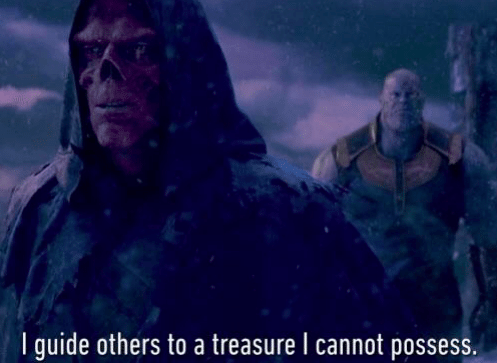
Kia ora. Welcome back to week two. It was wonderful to meet you all last week and to see the 'mood boards' you created about your personal taonga. This week we are moving out to wider Aotearoa. We will be looking at what is treasured in New Zealand. Some of the tings we identify may be specific to a certain place, community, culture or group but other may be something that all New Zealanders can agree are taonga.
Success Criteria: I can/have...
- Identify a taonga in New Zealand
- Describe where the taonga comes from/is found
- Explain why it is a taonga and name the group of people the taonga is associated with
Activities:
- In groups of 2-3 brainstorm taonga in Aotearoa
- Select 2-3 taonga and research where the taonga is from/where it is present and which group of people treasure it
- Create an information page to inform others in the class about your chosen taonga
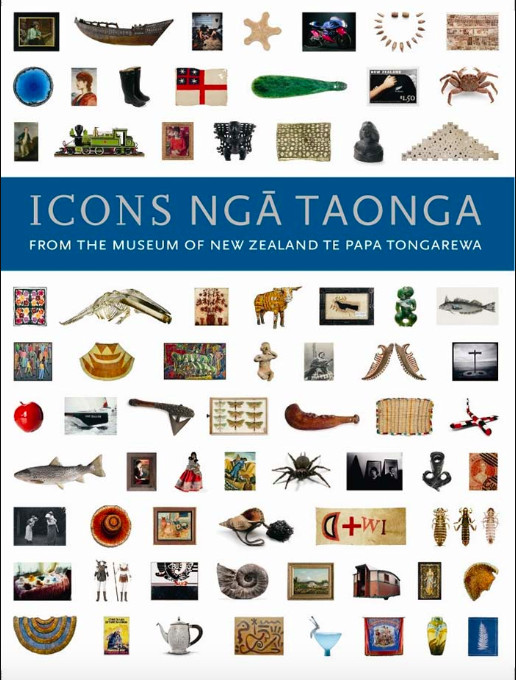
Homework:
Have a conversation with your family about what they think is taonga in Aotearoa.EXPLORE / TŪHURA learning intentions:
- We are EXPLORING taonga that are important to Aotearoa and explain why they are treasured.
- We are EXPLORING the significance of culture and identity of New Zealand
- We are EXPLORING National Identity of New Zealand
-
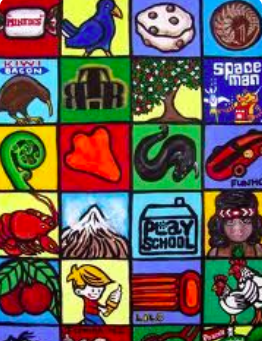
Whaowhia te kete mātauranga
Fill the basket of knowledge
Kia ora, last week, we explored some of the taonga of Aotearoa. These taonga may have a monetary value (gold, crystals), may be of geographical significance (places, landmarks) or could even be biological (native animals, people). This week were are going to change the lens slightly and look at items of Kiwiana. What do you think of when you think of Kiwiana? Are there items that are unique to New Zealand that are recognised across our land and out to different countries as being our own? Think about the gifts you send to friends and relatives overseas, does anything represent who we are as a people and a nation?
Success Criteria: I can/have...
- Describe key ideas about culture and identity and what makes us who we are
- Explain the importance of culture, and how each of us is unique
- Evaluate and reflect on how each of us has a different culture
- Explain the importance of culture
Activities:
- Mind Map of What do you think of when you hear ‘New Zealand identity’ or ‘Kiwiana’(include symbols, words and pictures. You could also include titles of songs, poems, TV shows or other literature). Complete your mind map in your book - you can use your device to search for logos/images to help you.
Deciding what makes Kiwiana depends a lot on who you are, your background culture and other influences that you have grown up with. For something to get the name Kiwiana it may have to meet the following requirement.
- Be recognised as familiar to many people across New Zealand
- Have stood the test of time (popular over time)
- Hold a special memory or positive appeal to New Zealanders
- It usually reflects a value/s or idea/s that many people hold
- They are quite often unique to that community/country
Homework:
Have a look around your home. What items do you see that reflect a specific culture? What items could be referred to as Kiwiana (or similar in your own culture). Discuss with your family how they feel about these items. Be prepared to share this in class.EXPLORE / TŪHURA learning intentions:
- We are EXPLORING taonga that are important to Aotearoa and explain why they are treasured.
- We are EXPLORING the significance of culture and identity of New Zealand
- We are EXPLORING National Identity of New Zealand
-
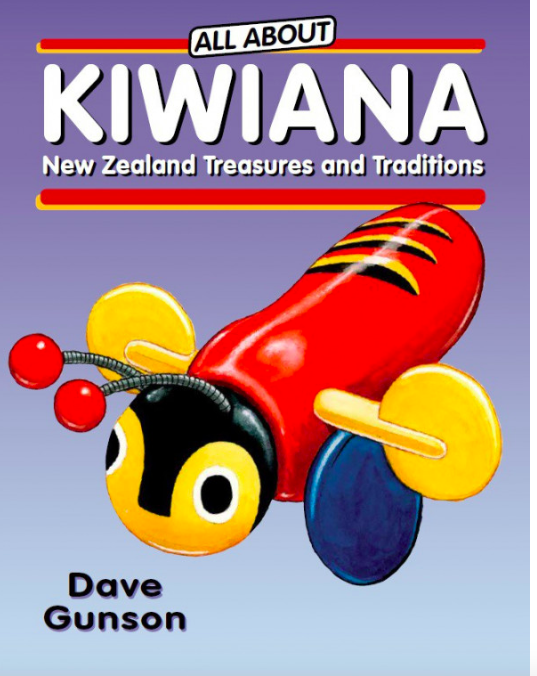
He Taonga rongonui te aroha ki te tangata
Goodwill towards others is a precious treasure
Kia ora, we have a short week this week and lots to achieve. You have been working to develop your understanding of kiwiana and how our national identity is held in the things we choose to represent us internationally. We are going to continue to look at this area, thinking about the culture and ientity of New Zealand
Success Criteria: I can/have...
- Identify the key aspects of culture and identity
- Identify aspects of our Kiwi lifestyle that are unique to us as a culture
- Identify kiwiana objects
- Describe key ideas about culture and identity and what makes us who we are
- Evaluate and reflect on how each of us has a different culture
Activities: (Google classroom)
- General Knowledge Quiz - 24 February
- Codebreaker activity
- Countries and Symbols
- National Identity
- I'm a kiwi, but what's that?
Homework:
Look around your home for symbols of national identity. What do you see? Share with a buddyWe are learning to understand the significance of culture and identity of New Zealand
EXPLORE / TŪHURA learning intentions:
- We are EXPLORING taonga that are important to Aotearoa and explain why they are treasured.
- We are EXPLORING the significance of culture and identity of New Zealand
- We are EXPLORING National Identity of New Zealand
-
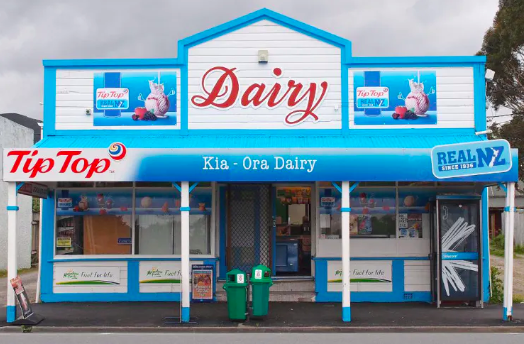
Mauria te pono
Believe in yourself
Kia ora. I hope you enjoyed the long weekend break. Hopefully you got outside and enjoyed being a kiwi in summer! It's now officially autumn, but I don't think anyone has told the weather.
Success Criteria: I can/have...

L3
Understand how people view and use places differently.
Understand how people make decisions about access to and use of resources.
Understand how the movement of people affects cultural diversity and interaction in New Zealand.
DO NOW:
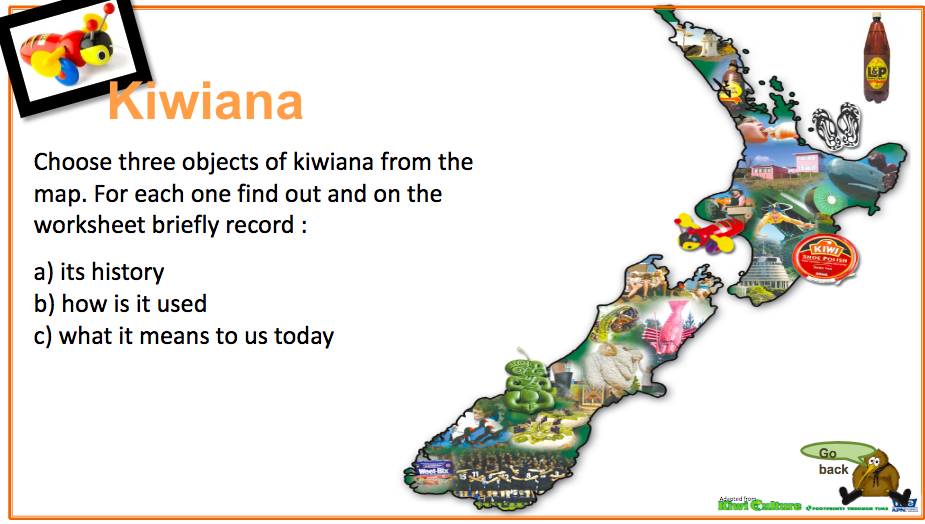

Activities:
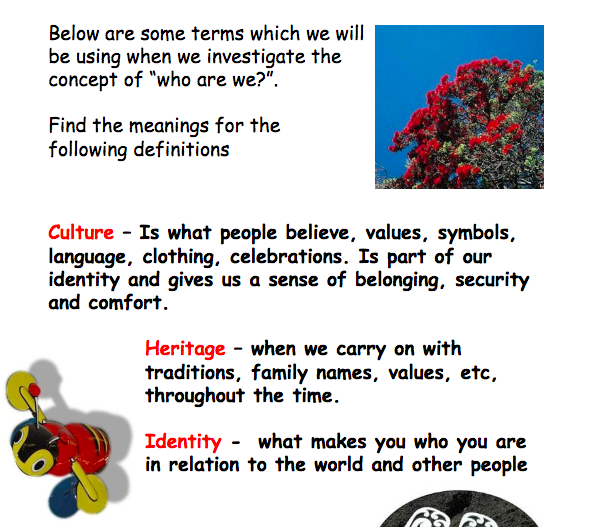
 Write
Write - Understanding NZ see google classroom
- What does it mean to be New Zealander? - Just Pretend.
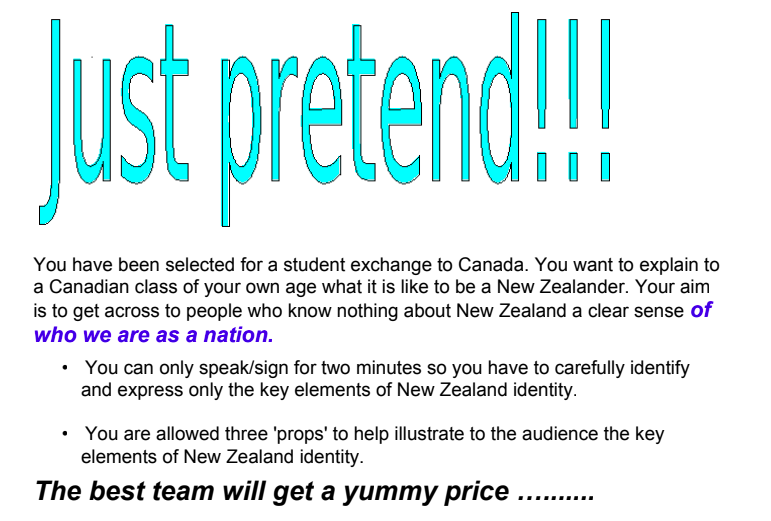
EXPLORE / TŪHURA learning intentions:
- We are EXPLORING taonga that are important to Aotearoa and explain why they are treasured.
- We are EXPLORING the significance of culture and identity of New Zealand
- We are EXPLORING National Identity of New Zealand
-
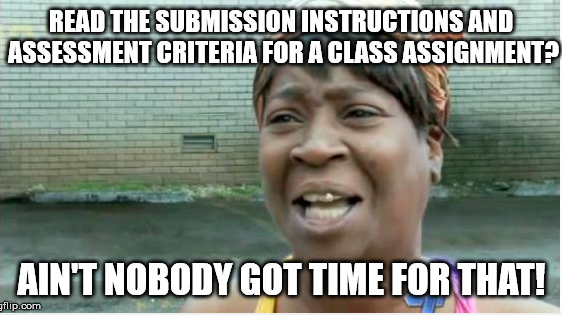
Ko te mutunga oranga, he timatatanga kaha!
Winning starts with beginning!
Kia ora. Week 6! Wow! Where has the time gone to? This week we are going to share our "Just Pretend" presentations with 8M2Global on Wednesday, so make sure your group has completed their work and are read to share.
Success Criteria: I can/have...
Achievement Objectives
L3
Understand how people view and use places differently.Understand how people make decisions about access to and use of resources.Understand how the movement of people affects cultural diversity and interaction in New Zealand.Activities:
- Complete "Just Pretend" task
- Present/Share with 8M2
- Unpack Assessment task
Homework:
Assessment taskPLAN & DO / WHAKAMAHI learning intentions:
- We are PLANNING a new element of kiwiana that demonstrates how New Zealand is viewed by different people
- We are Creating a new piece of kiwiana
-
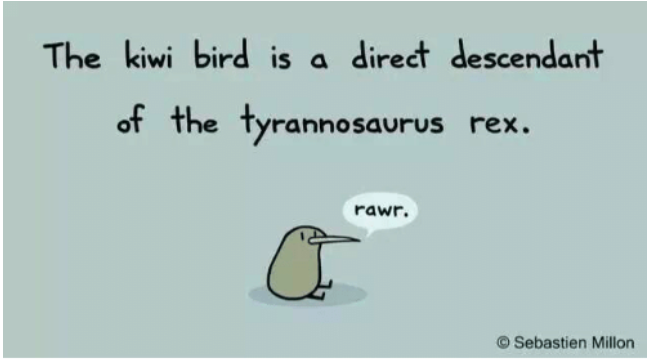
Whiria te tangata.
Weave the people together.
Kia ora. I hope you all enjoyed our library session on Friday - I really enjoyed seeing you connect with a book - it was fantastic to see how many of you choose the first book you selected. That shows me what an awesome librarian Mrs Townsend its, because she selected the books that were put out on the tables for you! I hope you saw some books that were new to you - sometimes seeing then as a collection of genre rather than alphabetical by author gives you a new path to travel on your reading journey. This week we are going to work on our shared assessment task for English and Global Studies. For both subject areas you are presenting your short text about kiwiana, and then you will have a specific piece of writing about poetic techniques for English and Kiwiana's link to National Identity for Global Studies. I am really looking forward to reading your texts.
Success Criteria: I can/have...
Identify kiwiana and explain how it is used
Develop a new piece of kiwiana suitable for Aotearoa in the 21st Century
Activities:
- Complete Kiwiana short text
- Identify the historical link of the kiwiana to nationhood
- Explain how and why my new element of kiwiana links to the identift and nationhood of Aotearoa
Homework:
Assessment Task 1
FOCUS / ARONGA learning intentions:
- We are FOCUSING on one element of kiwiana that links to the element of nationhood and identity we have identified
-
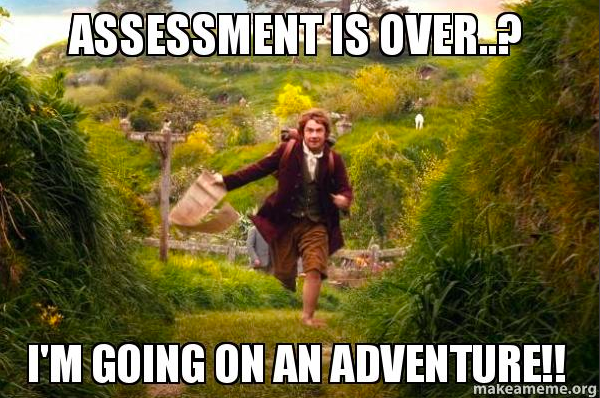
Kia kaha, kia maia, kia manawanui
Be strong, be brave, be steadfast
Kia ora. I hope you have all had a restful weekend and have not had to stress too much over assessment tasks. If you have managed your time well, your may have had a few polishing details to do, but the bulk of your work will be completed. Remember, this week you are uploading the same document with all required tasks to both Global and English. You will need:
- Short Text (Poetic writing)
- Paragraphs about Kiwiana and National Identity
- Paragraphs about Poetic Language Techniques
We will be continuing our work on the Taonga of New Zealand by researching a specific geographical area of Aotearoa and creating a shared map (with 8M2) that details the many treasures we have in our beautiful country. We will be focusing on how people make decisions about access to and use of resources.
Success Criteria: I can/have...
Identify the resources of a geographical area
Research how the resource is perceived, used and protected
Explain how these ideas determine the decisions made about the resources
Activities:
- Submit Assessment task
- Brainstorm resources of your assigned geographical area
- Create a KW chart about these resources to identify research focus
Homework:
UPDATE UPDATE UPDATE......
Phew - now that I have your attention.
If you can get your assessment task uploaded, please do so - it is important that we stick to routines where we can - but then....... relax, find something to do that calms you - perhaps it is reading, or craft, or a walk or even gaming.....
I have started a diary - not necessarily to share but to record what is happening at the moment and how I feel about it. I encourage you to do the same. Your perspective is important - you are able to be the historians of this moment. You can use an online platform like blogger.com - create a google doc, or go old-school like me and grab an exercise book (or a fancy diary with a lock).
We have 4 days until the end of the term as the school holidays have been moved to the start of next week. We will have some distance learning after that until we are all able to return to school. This all happened so suddenly we were unable to farewell each other and that is pretty unsettling - so from me to you, Have a safe and relaxing holiday break and I will see you all next term. I am looking forward to hearing about what you have got up to.
I have set up an edmodo class page - you can access it by going to edmodo.com and signing in with google (school account) Chick on "I am a student" and join with class code 73d5uh - please don't share this with anyone who is not in 8M1. I will remove anyone who is not in the class, and can also see everything you write. I can change your status to read only if you do not use this space appropriately. Oh - and I will put the general Knowledge Quiz up on google classroom for you. May the odds be ever in your favour. ʕ •ᴥ•ʔ
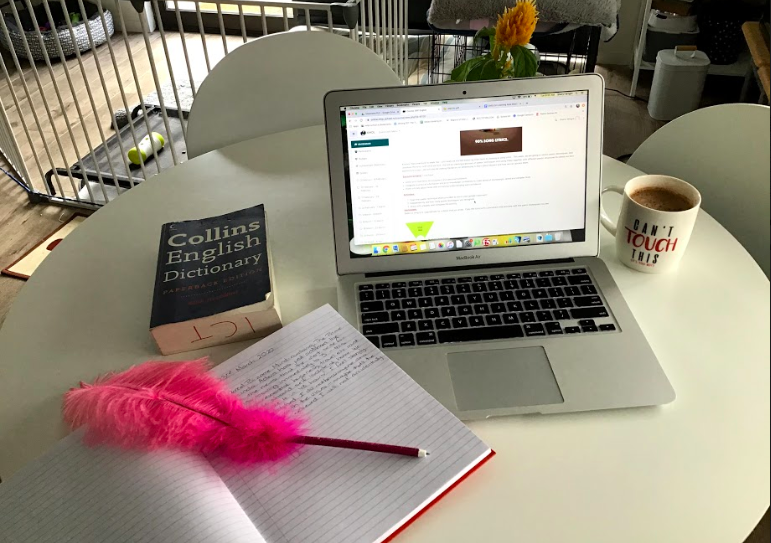
REFLECT / WHAIWHAKAARO learning intentions:
- We are REFLECTING...on our assessment task and reviewing our work. We are evaluating any gaps and generating personal next steps to improve our work. We are identifying problems or barriers to learning and checking our work fit the intended purpose
-
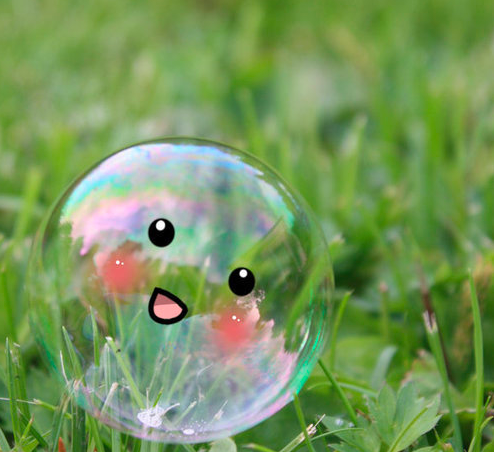
Hoping you are all safe and happy in your bubbles
Relax and enjoy the first week of the school holidays:-)
-
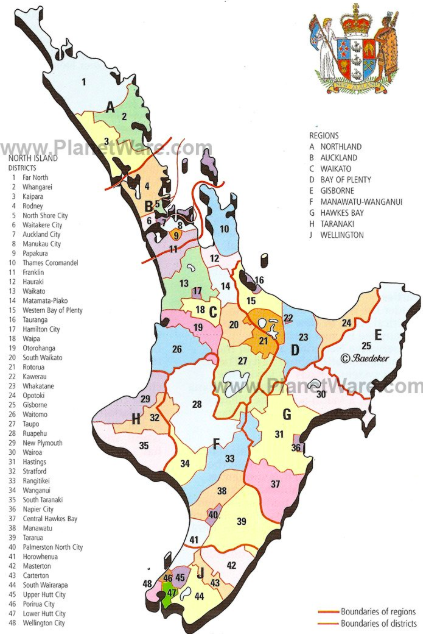
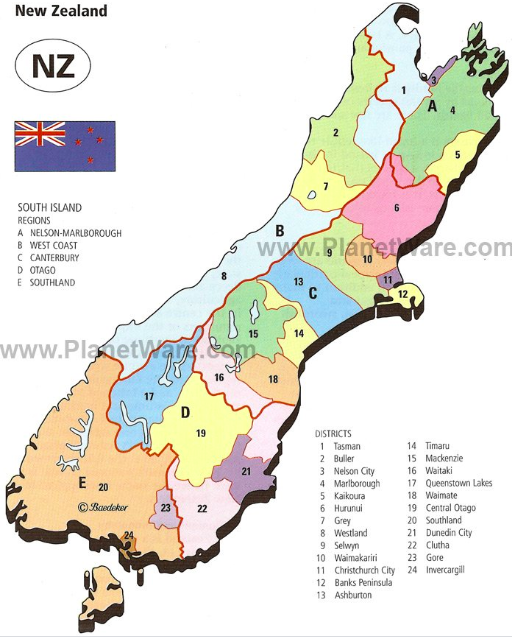
Hurihia to aroaro ki te rā tukuna to atarangi kia taka ki muri i a koe.
Turn to face the sun and the shadows fall behind you.
Kia ora. This week, we are going to continue our work on the treasures of New Zealand by looking at the resources that are spread across our wonderful country. You will see the map above breaks New Zealand down into districts. You will all select a district and research what is valued in that district. I will upload a spreadsheet to google classroom for you to select your district (and list your name against). It is first in, first served, but remember - with a google sheet I can see all revisions and I would expect you use pono (integrity) and not remove or change the names already entered.
You will be creating a slide for your district that explains the resource(s) that are valued, together with images that show the resource(s) you are describing. Everyones slide will be used to create a larger slideshow that will allow a viewer the see New Zealand resources at a glance, so it is important that your research is accurate and that your revise and edit your work carefully.
Success Criteria: I can/have...
- Selected a district
- Recorded name against district
- researched district for resources valued
- created a slide showing the resource
- edited and proofread carefully
Activities:
- Find a district that interest you - it may have a link to your family - either historically or through family interests and holidays - or you may just be interested in it
- Research the district to identify what is a valued resource in this district (why did people settle in this area?)
- Create a slide that demonstrated your understanding of the resources of your chosen district.
Homework:
-
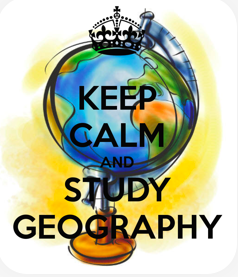
Whāia te iti kahurangi ki te tūohu koe me he maunga teitei.
Aim for the highest cloud so that if you miss it, you will hit a lofty mountain
Kia ora, I hope your first week back of distance learning was not too stressful, and you now have a better idea of how you will be working within your home bubble. I will be putting the big idea on MHOL, together with the success criteria and activities and any instructions you need. Google classroom will be used to distribute resources and for you to upload your completed work and we will all meet on Wednesday at 11 where you can raise any questions you have. Please remember, you can email me at any time with questions I I will try and get back to you as soon as I am available. I will set up a google slide show in google classroom for you to add your district slide to, please don't overwrite another slide, you will have editing rights so can add an extra slide if you need one. This week, we are going to look at geography - what does geography mean, what are map skills, and how can we develop our map skills. We will be focusing on how people make decisions about access to and use of resources.
Success Criteria: I can/have...
Identify the resources of a geographical area
- Research how the resource is perceived, used and protected
- Explain how these ideas determine the decisions made about the resources
Learning Intention
We are EXPLORING NZ treasures in resources using geographic and mapping skills.
We are focusing on developing the use of map skills
Visible Learning
identifying continents and countries on a map and locate the local area through the development of map skills.
describe the location of the local area using simple geographical terms
Develop skills to use a map and Atlas effectively to locate features
Provide a 4 and 6 figure reference to locate places in a map
Activities:
- Google classroom (Understanding Geography)
Homework:
Write here... -
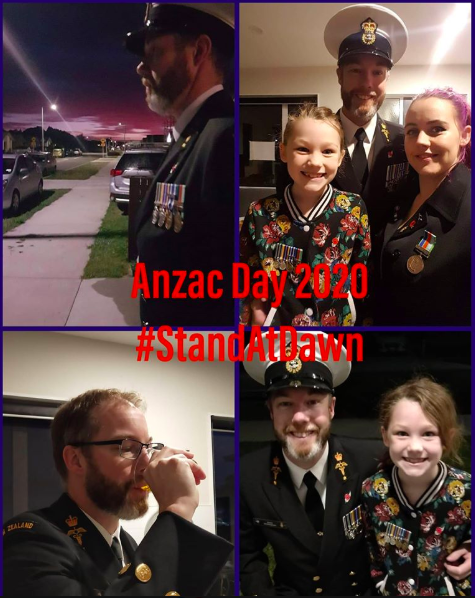
Kia mau ki te tokanganui-a-noho
There's no place like home
Kia ora. Welcome to ANZAC day from my bubble. This is a picture of my son-in-law, my daughter and my grand-daughter standing at dawn on ANZAC day. Don't they look proud. I hope wherever you were, you were able to spend some time thinking about the meaning about ANZAC day. Perhaps you also thought about how ANZAC day links to our Level 4 lockdown. In our own way we are also at battle at the moment for the good of our country. How do you think the next generations will view the actions and events of the moment?
Over the next few weeks, you will be working from home, please include your family and do the activities together if you are able. I know that your family are busy people, but working together in your bubble is a good way to keep connected - perhaps you can include elder family members too - a phone call to an aunt or a grandparent to share what you are learning could even surprise you with what your family already know! Our new learning context is Wai and Kai not. Can you guess what this might be about? Wai is Māori for water and Kai is food - so how do these words go together? What might the not mean?
We are going to start investigating the consumer world and its impact on us, on our whanau, on our country and on our world. Our goal will be to discover how we can be better consumers so we limit our impact on the environment. This week we will look at needs and wants through different activities including drawing and playing cards. Have your needs and wants changed over the past 4 weeks?Learning Intentions: I can/have...
- have a "big picture" of what the new topic for term 2 means
- understand the relationship between Rights and Responsibilities
- identify the difference between a want and a need.
- contribute ideas through different activities
Success criteria: I can/have...
- explain what the expectations for Term 2 are
- understand the importance of being responsible in order to respect people's rights
- give a definition of what Needs and Wants are
- make a collage showing needs and wants
Activities: (Google classroom)
- Read the Outline for Term 2
- Rights/Responsibilities
- Needs/Wants
Homework:
Write here...EXPLORE / TŪHURA learning intentions:
- We are EXPLORING what are rights and responsibilities are and connecting these to our identity as consumers
- We are EXPLORING wants and needs and classifying these into essential and non-essential. We are collaborating with others to develop of shared understanding
-
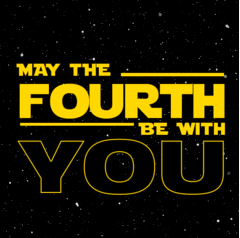
Tangata ako ana i te whare, te tūranga ki te marae, tau ana.
A person who is taught at home, will stand collected on the marae.
Kia ora. It was a short week last week, so this week we are going to continue the work we started last week.
Over the next few weeks, you will be working from home, please include your family and do the activities together if you are able. I know that your family are busy people, but working together in your bubble is a good way to keep connected - perhaps you can include elder family members too - a phone call to an aunt or a grandparent to share what you are learning could even surprise you with what your family already know! Our new learning context is Wai and Kai not. Can you guess what this might be about? Wai is Māori for water and Kai is food - so how do these words go together? What might the not mean?
We are going to start investigating the consumer world and its impact on us, on our whanau, on our country and on our world. Our goal will be to discover how we can be better consumers so we limit our impact on the environment. This week we will look at needs and wants through different activities including drawing and playing cards. Have your needs and wants changed over the past 4 weeks?
Success Criteria: I can/have...
- have a "big picture" of what the new topic for term 2 means
- understand the relationship between Rights and Responsibilities
- identify the difference between a want and a need.
- contribute ideas through different activities
Success criteria: I can/have...
- explain what the expectations for Term 2 are
- understand the importance of being responsible in order to respect people's rights
- give a definition of what Needs and Wants are
- make a collage showing needs and wants
Activities (Google classroom):
- Read the Outline for Term 2
- Rights/Responsibilities
- Needs/Wants
- Why we buy
Homework:
Write here...EXPLORE / TŪHURA learning intentions:
- We are EXPLORING what are rights and responsibilities are and connecting these to our identity as consumers
- We are EXPLORING wants and needs and classifying these into essential and non-essential. We are collaborating with others to develop of shared understanding
-
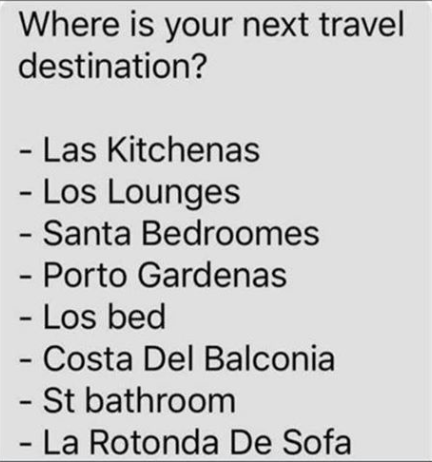
Ānei au, tō pou whirinaki.
I’m here, I’ll support you.
Kia ora. Welcome to another week of distance learning. Have you been keeping up with the news? I guess we will know early in the week whether we this will be our last week working at a distance.
Learning outcomes:
Students will explore consumer protection in an authentic context.
Key concepts:
Rights
Responsibilities
Laws and regulations
Consumer protection
Success criteria: I can/have...
- Both consumers and retailers have rights and responsibilities
- Consumer protection laws and regulations cover goods and services purchased in New Zealand.
Activities (Google classroom):
- Why we buy
- Watch End of the line Video
- Consumer Rights (for early finishers)
Homework:
-
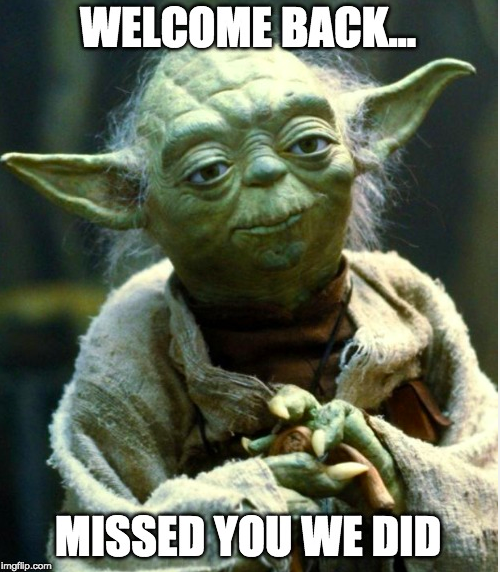
Moea tō poi, moea tō patu!
Be prepared!
Kia ora. I am so happy to be back on site at MHJC. How do you feel? It's weird that everything looks the same, but it really is a different world at the moment. This week you will notice a few changes to our routines as we settle back into school at Alert level 2. You will be in the same room all day, and your teachers will come to you. You will have to be a bit patient with the teachers as we navigate different projector set-ups and even just changing where we stand and where the board is. This week we are going to review what we have done so far on Wai and Kai. You will be sharing your google classroom work on Needs and Wants, Rights and Responsibilities and Consumer Rights with a class buddy We will also review the documentary I asked you to watch last week. Phew, that sounds like a lot of work, but we are now halfway through the term and need to focus on what we need to achieve.
Learning Intentions: We are learning to (WALT)...
- understand the relationship between Rights and Responsibilities
- identify the difference between a want and a need.
- contribute ideas through the different activities
Success Criteria: I can/have...
- understand the importance of being responsible in order to respect people rights
- give a definition of what is Needs and Wants
- explain some of the rights a consumer has in New Zealand
- Discuss my thoughts on the documentary "End of the Line"
Activities (Google Classroom):
- Review Needs/Wants
- Review Rights/Responsibilities
- Review Why we Buy
- Review "End of the Line"
- Consumer Rights
Homework:
Write here...EXPLORE / TŪHURA learning intentions:
- We are EXPLORING what are rights and responsibilities are and connecting these to our identity as consumers
- We are EXPLORING wants and needs and classifying these into essential and non-essential. We are collaborating with others to develop of shared understanding
-

Wishing you a joyous Eid Celebration
Ko ia kāhore nei i rapu, tē kitea.
He who does not seek, will not find.
Kia ora. Wishing a joyous Eid celebrations to many of you. This week we are going to continue on with our learning, we are heading to the time where assessments tasks will be introduced to you, so It is important that you continue to complete the work we are doing in preparation (and catch-up on any tasks that you did not complete while distance learning)
Success Criteria: I can/have...
- Both consumers and retailers have rights and responsibilities
- Consumer protection laws and regulations cover goods and services purchased in New Zealand.
Achievement Objectives
Understand how producers and consumers exercise their rights and meet their responsibilities.
Learning outcomes:
Students will explore consumer protection in an authentic context.
Key concepts:- Rights
- Responsibilities
- Laws and regulation
- Consumer protection
Studies Learning Intention
We are EXPLORING what are rights and responsibilities are and connecting these to our identity as consumers
We are EXPLORING wants and needs and classifying these into essential and non-essential. We are collaborating with others to develop of shared understanding
Global Success Criteria
Identifying key concepts
Observing the importance of being responsible in order to respect people rights
Identifying and describing the rights and responsibilities of consumers and producers
making connections between the process of trash disposal from our house to the ocean
Describe some environmental problems created by our consumer world
categorising impacts in the water due to our consumerism
describe the process of extraction through sale, use and disposal, all the stuff in our lives affects communities at home and abroad
Describe how the Consumer Guarantees Act and the Fair Trading Act protect the consumer
making connections between the process of trash disposal from our house to the ocean
Reflecting future economic and environmental strategies
Activities (Google Classroom):- Continue watching End of the Line Documentary - take notes and answer questions. We stopped last week at the 20 minute mark. Add any additional information from last week's virtual reality session you think supports your learning.
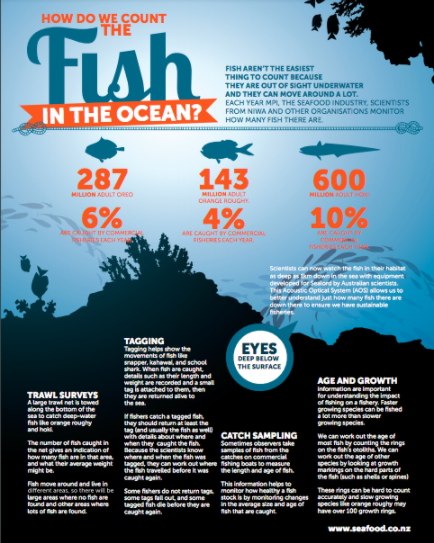
Homework:
Write here... -
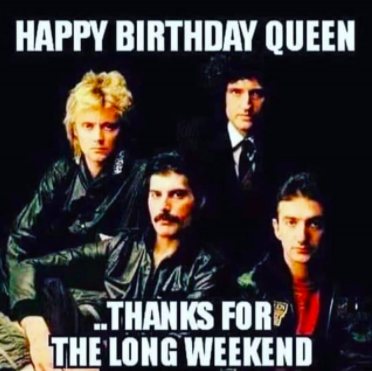
Ko koe ki tēnā, ko ahau ki tēnei kīwai o te kete.
You take that handle of the kete and I’ll take this one.
Kia ora. Did you get out on the water during the long weekend? Perhaps you went fishing? If you could give some advice to recreational fishers what would it be? What about commercial fishers? Wai or Kai not?
Success Criteria: I can/have...
- Both consumers and retailers have rights and responsibilities
- Consumer protection laws and regulations cover goods and services purchased in New Zealand.
Achievement Objectives
Understand how producers and consumers exercise their rights and meet their responsibilities.
Learning outcomes:
Students will explore consumer protection in an authentic context.
Key concepts:- Rights
- Responsibilities
- Laws and regulation
- Consumer protection
Studies Learning Intention
We are EXPLORING what are rights and responsibilities are and connecting these to our identity as consumers
We are EXPLORING wants and needs and classifying these into essential and non-essential. We are collaborating with others to develop of shared understanding
Global Success Criteria
Identifying key concepts
Observing the importance of being responsible in order to respect people rights
Identifying and describing the rights and responsibilities of consumers and producers
making connections between the process of trash disposal from our house to the ocean
Describe some environmental problems created by our consumer world
categorising impacts in the water due to our consumerism
describe the process of extraction through sale, use and disposal, all the stuff in our lives affects communities at home and abroad
Describe how the Consumer Guarantees Act and the Fair Trading Act protect the consumer
making connections between the process of trash disposal from our house to the ocean
Reflecting future economic and environmental strategies
Activities (Google Classroom):
- Commercial Fishing in the Hauraki Gulf
- Sustainable Fishing and Social Justice
- Labelling of Sea-Food
Homework:
Write here...
-
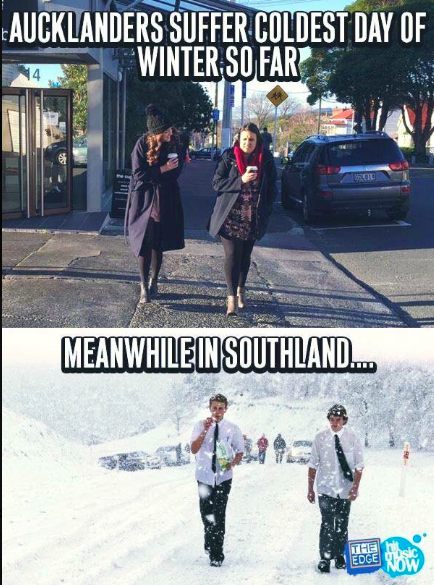
Ko te pae tāwhiti, whāia kia tata. Ko te pae tata, whakamaua kia tina.
Seek out distant horizons and cherish those you attain.
Kia ora. Brrrrrrrr, who else is feeling the cold? Last week was the official start of Winter! That got me thinking about seasons. We know Spring, Summer, Autumn and Winter but what other types of seasons are there? I saw something on the news about the duck hunting season and how it has been delayed by the lockdown and that made me wonder about fishing seasons. Are there specific times of the year when certain types of fish are caught (or not caught)? We will spend some time at the start of the week researching limitations to fishing (of fin fish and shell fish) due to seasons. What do these limitations mean for consumers? How do they affect demand (or want) for products?
Success Criteria: I can/have...
- Both consumers and retailers have rights and responsibilities
- Consumer protection laws and regulations cover goods and services purchased in New Zealand.
Achievement Objectives
Understand how producers and consumers exercise their rights and meet their responsibilities.
Learning outcomes:
Students will explore consumer protection in an authentic context.
Key concepts:- Rights
- Responsibilities
- Laws and regulation
- Consumer protection
Studies Learning Intention
We are EXPLORING what are rights and responsibilities are and connecting these to our identity as consumers
We are EXPLORING wants and needs and classifying these into essential and non-essential. We are collaborating with others to develop of shared understanding
Global Success Criteria
Identifying key concepts
Observing the importance of being responsible in order to respect people rights
Identifying and describing the rights and responsibilities of consumers and producers
making connections between the process of trash disposal from our house to the ocean
Describe some environmental problems created by our consumer world
categorising impacts in the water due to our consumerism
describe the process of extraction through sale, use and disposal, all the stuff in our lives affects communities at home and abroad
Describe how the Consumer Guarantees Act and the Fair Trading Act protect the consumer
making connections between the process of trash disposal from our house to the ocean
Reflecting future economic and environmental strategies
Activities (Google classroom):
- Research fishing "seasons"
- Research legislation (laws) that apply to fishing in New Zealand
- Discuss the role of consumers on fishing in New Zealand
Homework:
Write here...
-
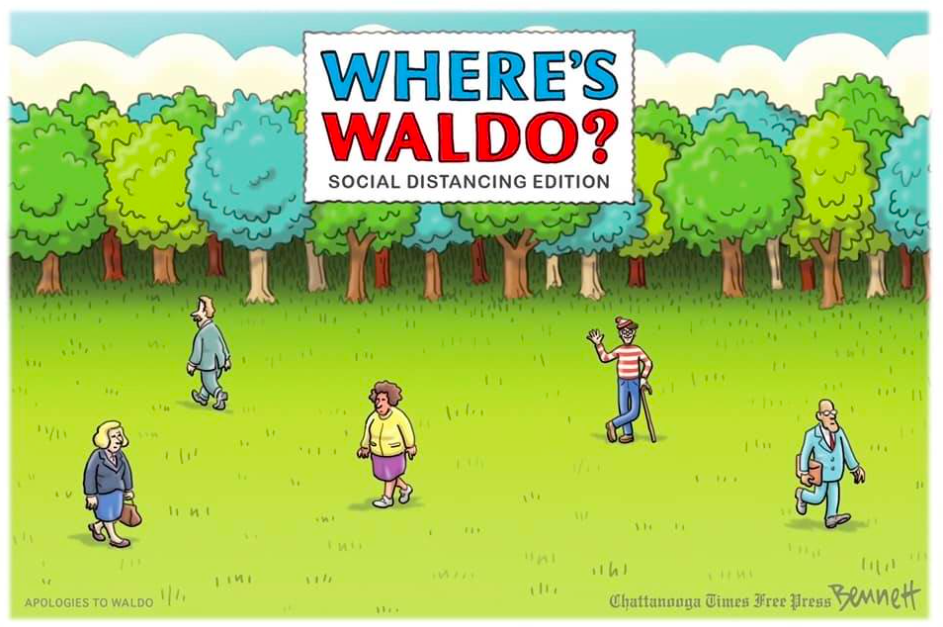
Ka pū te ruha, ka hao te rangatahi.
As an old net is cast aside, another is remade.
Kia ora. I hope you all enjoyed the first weekend of level 1. I went out to a shopping mall, and it was strange seeing so many people at once (and all of them walking so close together!) It seems odd that things are so quickly going back to 'normal'. As the school term started during lockdown, we have a longer term - so while many of you feel like the term is almost over, we still have 3 weeks face-to-face to complete our terms work before we can have the break I know we are all looking forward to. By the end of this week, you need to have finished your static image for your shared English/Global/Science task. You will be working on your information for your TED talk which will be where you explain how your static image supports your learning and thinking from Global Studies and Science. Please check the assessment instructions and marking criteria carefully to ensure you include all the information you require and remember the time limits! Your presentations will begin at the start of next week (Monday! Be Ready!)
Success Criteria: I can/have...
- Both consumers and retailers have rights and responsibilities
- Consumer protection laws and regulations cover goods and services purchased in New Zealand.
Achievement Objectives
Understand how producers and consumers exercise their rights and meet their responsibilities.
Learning outcomes:
Students will explore consumer protection in an authentic context.
Key concepts:- Rights
- Responsibilities
- Laws and regulation
- Consumer protection
Studies Learning Intention
We are EXPLORING what are rights and responsibilities are and connecting these to our identity as consumers
We are EXPLORING wants and needs and classifying these into essential and non-essential. We are collaborating with others to develop of shared understanding
Global Success Criteria
Identifying key concepts
Observing the importance of being responsible in order to respect people rights
Identifying and describing the rights and responsibilities of consumers and producers
making connections between the process of trash disposal from our house to the ocean
Describe some environmental problems created by our consumer world
categorising impacts in the water due to our consumerism
describe the process of extraction through sale, use and disposal, all the stuff in our lives affects communities at home and abroad
Describe how the Consumer Guarantees Act and the Fair Trading Act protect the consumer
making connections between the process of trash disposal from our house to the ocean
Reflecting future economic and environmental strategies
Activities:
- Draft your TED talk information
- Check your TED Talk against the marking criteria
- Practice delivering your TED Talk
- Get feedback from a peer (use the criteria to give feedback)
Homework:
Write here...
-
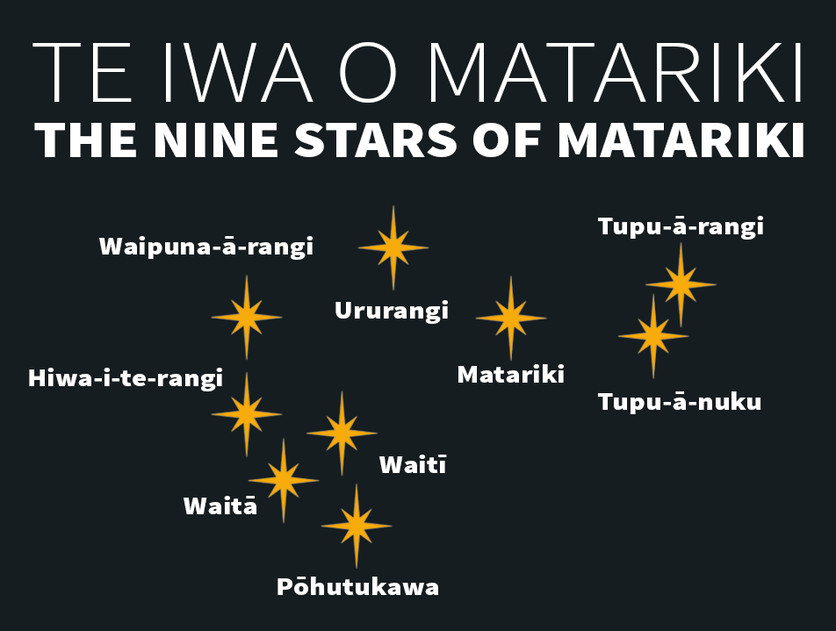
He kākano ahau i ruia mai i Rangiātea.
I am a seed which was sown in the heavens of Rangiātea.
Kia ora. I hope you took advantage of the Teacher Only Day on Friday to recharge your batteries and rebuild your energy for the last two weeks of the term. Hopefully, you also go out to celebrate the start of Matariki. (Interestingly, when you make a typo when writing start of Matariki as I just did, you get Star of Matariki which is also very appropriate). There is even a story about the Seven fishes of Matariki- how cool is that when we are about to start our TED talks about fishing in New Zealand!
Success Criteria: I can/have...
- Both consumers and retailers have rights and responsibilities
- Consumer protection laws and regulations cover goods and services purchased in New Zealand.
Achievement Objectives
Understand how producers and consumers exercise their rights and meet their responsibilities.
Learning outcomes:
Students will explore consumer protection in an authentic context.
Key concepts:- Rights
- Responsibilities
- Laws and regulation
- Consumer protection
Studies Learning Intention
We are EXPLORING what are rights and responsibilities are and connecting these to our identity as consumers
We are EXPLORING wants and needs and classifying these into essential and non-essential. We are collaborating with others to develop of shared understanding
Global Success Criteria
Identifying key concepts
Observing the importance of being responsible in order to respect people rights
Identifying and describing the rights and responsibilities of consumers and producers
making connections between the process of trash disposal from our house to the ocean
Describe some environmental problems created by our consumer world
categorising impacts in the water due to our consumerism
describe the process of extraction through sale, use and disposal, all the stuff in our lives affects communities at home and abroad
Describe how the Consumer Guarantees Act and the Fair Trading Act protect the consumer
making connections between the process of trash disposal from our house to the ocean
Reflecting future economic and environmental strategies
Activities:
- Present TED Talk
- Consumer protection legislation in New Zealand
Homework:
Write here...
-
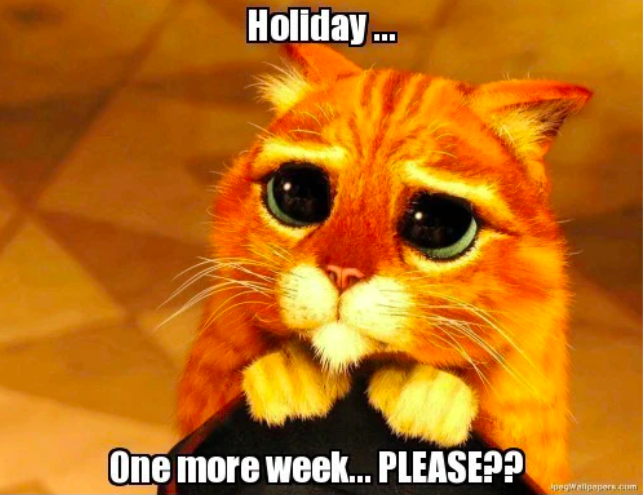
Kua takoto te Mānuka.
The leaves of the Manuka tree have been laid down (a challenge has been laid down or there is a challenge ahead of you).
Kia ora. I really enjoyed listening to your TED Talk presentations last week. This week, we are going to continue our exploration of consumer rights in New Zealand, who knows what Herman will do next (and how Auntie will help him understand his rights under New Zealand Consumer legislation.)
Success Criteria: I can/have...
- Both consumers and retailers have rights and responsibilities
- Consumer protection laws and regulations cover goods and services purchased in New Zealand.
Achievement Objectives
Understand how producers and consumers exercise their rights and meet their responsibilities.
Learning outcomes:
Students will explore consumer protection in an authentic context.
Key concepts:- Rights
- Responsibilities
- Laws and regulation
- Consumer protection
Studies Learning Intention
We are EXPLORING what are rights and responsibilities are and connecting these to our identity as consumers
We are EXPLORING wants and needs and classifying these into essential and non-essential. We are collaborating with others to develop of shared understanding
Global Success Criteria
Identifying key concepts
Observing the importance of being responsible in order to respect people rights
Identifying and describing the rights and responsibilities of consumers and producers
making connections between the process of trash disposal from our house to the ocean
Describe some environmental problems created by our consumer world
categorising impacts in the water due to our consumerism
describe the process of extraction through sale, use and disposal, all the stuff in our lives affects communities at home and abroad
Describe how the Consumer Guarantees Act and the Fair Trading Act protect the consumer
making connections between the process of trash disposal from our house to the ocean
Reflecting future economic and environmental strategies
Activities:
- Watch video for Consumer Rights - Unit 10
- Complete activities on google classroom
Homework:
Write here... -
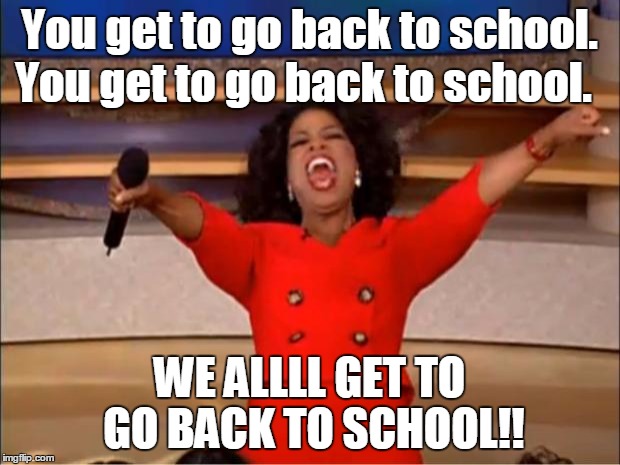
He rā whatiwhati kō.
A day of hardwork.
Kia ora. I hope you all had a lovely break and got out and about. What a change it was to be able to leave the house during the term break. Cast your mind back to the last term break and it was so very different. We have a busy term ahead of us. Will will mark the last of our Consumer Rights units (and try and get that last Kahoot squeezed in somewhere as well) .We need to start work on our new context "Gaming for Learning". What do you think this will involve?
Achievement Objective: Understand how exploration and innovation create opportunities and challenges for people, places, and environments.
Activities:
- Brainstorm (Categorise) New Zealand Innovations
- Select an invention/innovation for mini research
- Create a poster that informs of your chosen innovation/invention including who was involved, why it was needed and how it is used.
Homework:
Write here...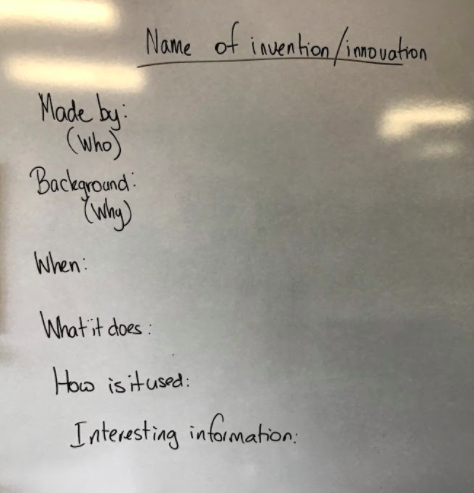
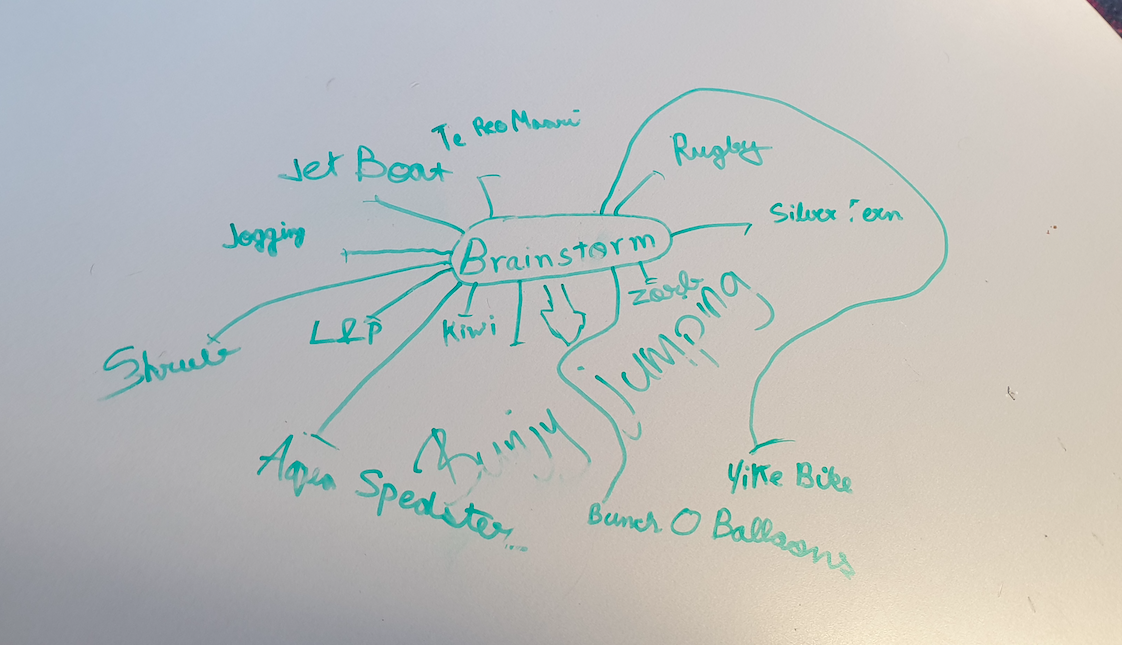
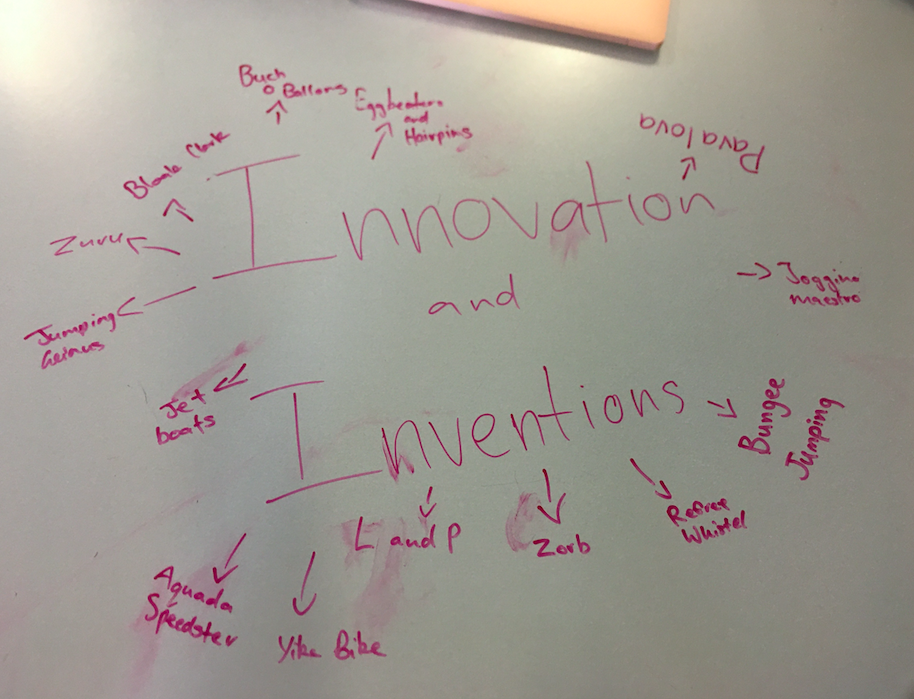
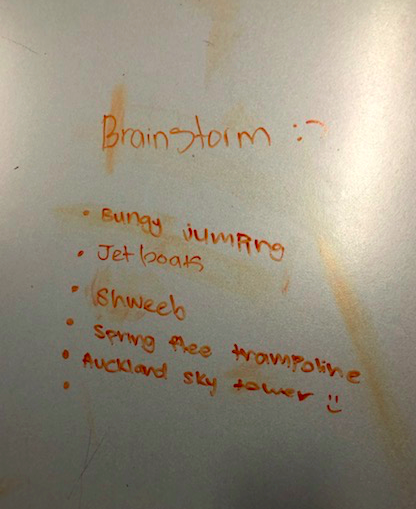
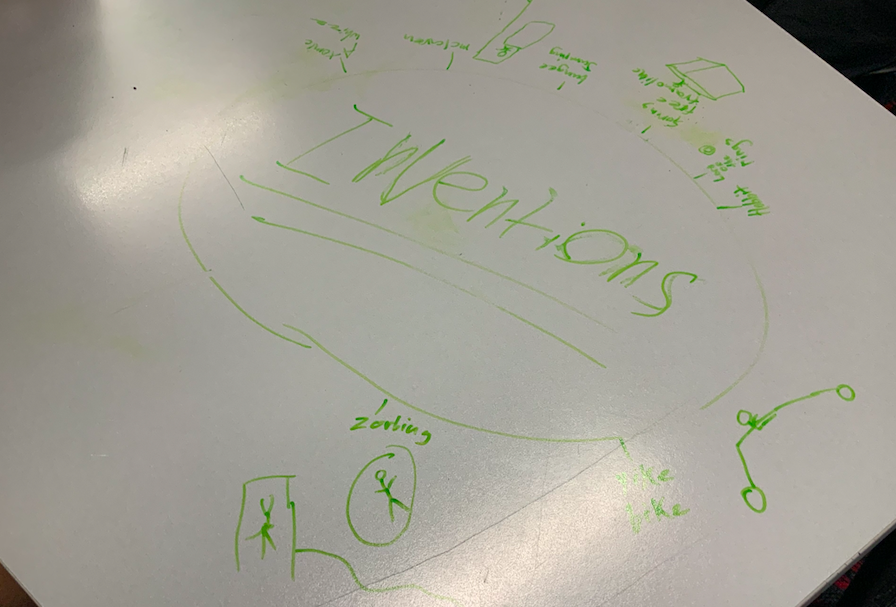
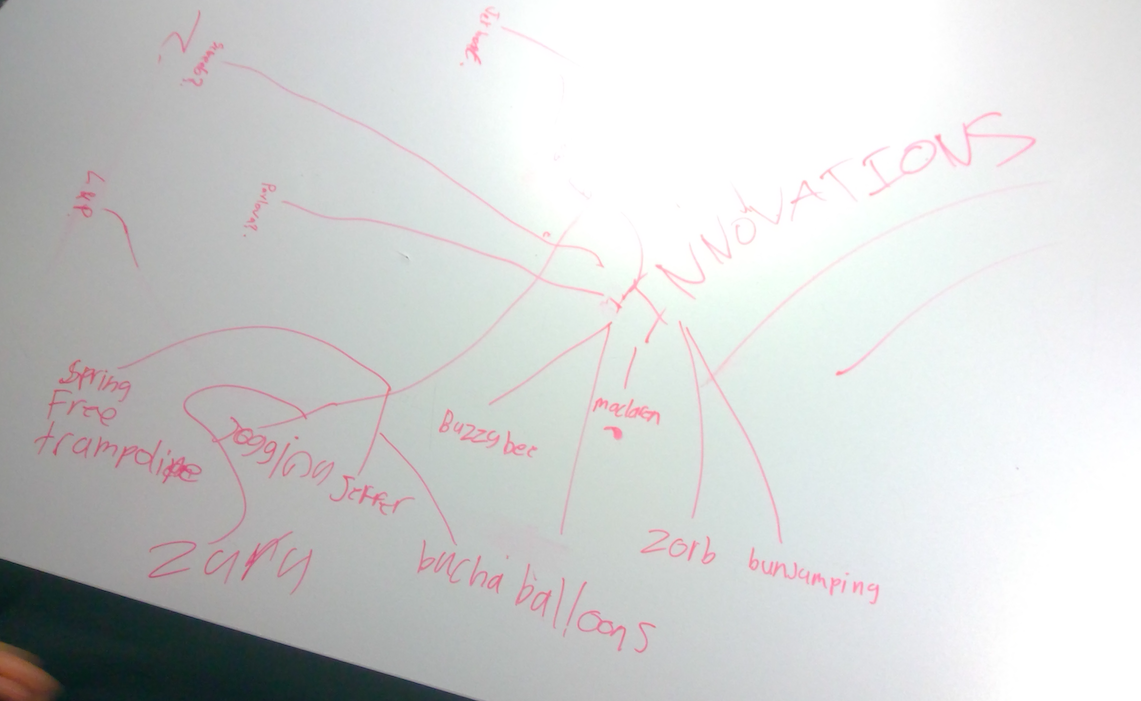
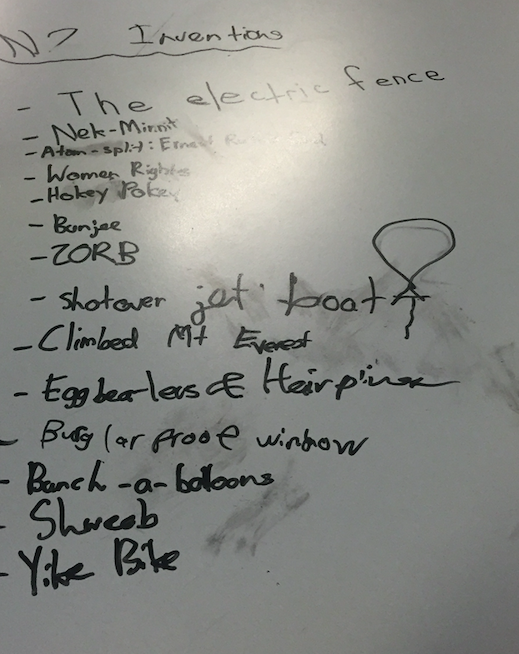
EXPLORE / TŪHURA learning intentions:
- We are EXPLORING the characteristics of innovation and the characteristics of invention
- We are classifying technological interventions as innovations or inventions and justifying our classifications
-
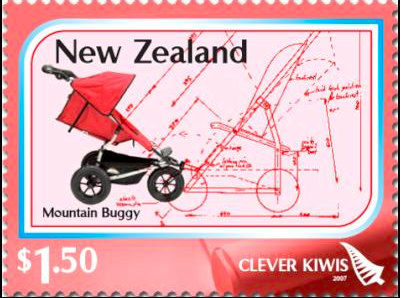
He mahi te āta noho, e kī ana te wheke
It is the octopus who says, “sitting is working”.
Kia ora. Well done on completing the cross country last week. It wasn't the best day for it but it was awesome to see you all trying your best. Last week we started looking at inventions and innovations in New Zealand. You completed a mini research project on a chosen invention and presented this to your group. This week, we are going to create a timeline of New Zealand inventions - and write a brief description of the invention at each point. I want you to start thinking about why an invention happens. What problem is trying to be solved? What opportunity has been presented?
Achievement Objective: Understand how exploration and innovation create opportunities and challenges for people, places, and environments
Success Criteria: I can/have...
- Identify some challenges that have led to inventions
- Describe opportunities created by inventions
- Discuss the difference between invention and innovation
Activities:
- Complete timeline activity (Google classroom)
- Write a brief paragraph describing each invention on the time line
- Brainstorm innovation and invention
- Create a Venn diagram using brainstorm
- Write a paragraph about the nature of invention and innovation
Homework:
Write here...
EXPLORE / TŪHURA learning intentions:
- We are EXPLORING the characteristics of innovation and the characteristics of invention
- We are classifying technological interventions as innovations or inventions and justifying our classifications
-
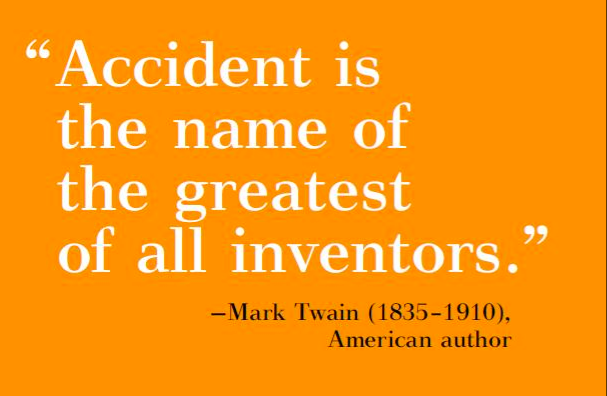
Hurihia to aroaro ki te rā tukuna to atarangi kia taka ki muri i a koe.
Turn to face the sun and the shadows fall behind you.
Kia ora. Well done on completing your timelines, using the conventions we discussed in class. As you can see, New Zealanders have invented a range of things - sometimes because of necessity - in the early days of settlement of Aotearoa (by both the Tangata Whenua in the 1300s and the Europeans 500 years later) it was either make for yourself or do without. We have brainstormed invention, this week we are going to think about innovation - and how invention and innovation work together.
Success Criteria: I can/have...
- Identify some challenges that have led to inventions
- Describe opportunities created by inventions
- Discuss the difference between invention and innovation
Activities:
- Brainstorm innovation and invention
- Create a Venn diagram using brainstorm
- Write a paragraph about the nature of invention and innovation
Homework:
Write here...EXPLORE / TŪHURA learning intentions:
- We are EXPLORING the characteristics of innovation and the characteristics of invention
- We are classifying technological interventions as innovations or inventions and justifying our classifications
-
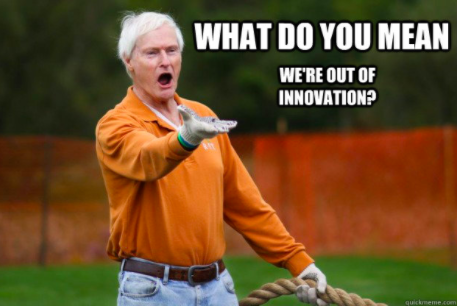
Kāore te kūmara e kōrero mo tōna ake reka.
The kūmara does not speak of his own sweetness.
Kia ora. Last week we started looking at how technology has impacted on our lives today, across a number of areas. This week, we are going to continue with this and also look at key terms associated with innovation. You will be creating a visual thesaurus that defines the key terms linked to innovation, and may be able to use some of the examples and ideas you have in your paragraphs to support your glossary entries.
Achievement Objectives:
- Understand how exploration and innovation create opportunities and challenges for people, places, and environments.
- Understand that events have causes and effects.
We are EXPLORING how the historical context of an invention influences the discovery
We are EXPLORING the term Chronology and History
We are EXPLORING Roman numerals
Success Criteria: I can/have...
Global Success CriteriaI can identify different stages in History
I can identify which history period my explorer come from
I can list times and dates into chronological order
I can see that the timeline is a chronology of dates and events
I can make centuries from a date
I can convert a century into a roman number
I can reflect how important is the historical period for the advances in technology and exploration
I can identify roman numbers
I can describe how a timeline is useful to give an overview of a historical period
I can explain why is an important timeline in history
I can define Chronology
I can describe the differences between Bc-Ad-CE and BCE
Activities:
- Complete Technology Paragraphs (in exercise books)
- Create visual glossary (Google classroom)
Homework:
Write here...
EXPLORE / TŪHURA learning intentions:
- We are EXPLORING the characteristics of innovation and the characteristics of invention
- We are classifying technological interventions as innovations or inventions and justifying our classifications
-
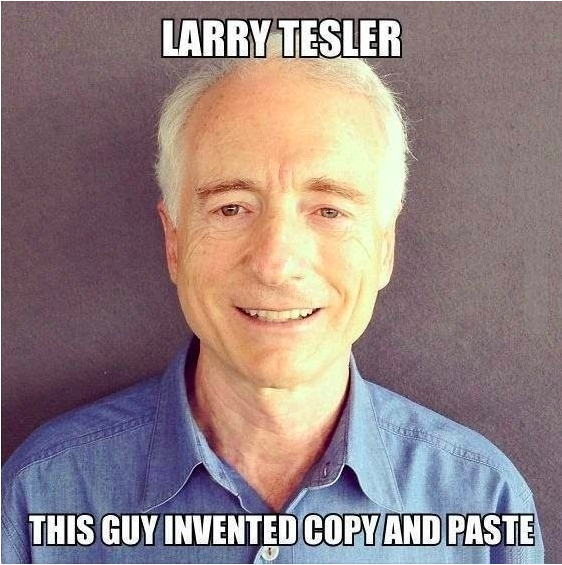
Waiho i te toipoto, kaua i te toiroa.
Let us keep close together not far apart.
Kia ora. Did you know about Larry Tesler? I didn't and I use his amazing invention ALL THE TIME (in fact, I used it when putting the whakatauki above). What a guy! This week we are going to continue our work on invention and innovation - you should be well underway with your visual glossary (specialised subject dictionary), I am going to ask you to watch a short video and take notes on some of the specific vocabulary he uses. Are these terms in your visual glossary already? Add any that are not with meaning and supporting images. We will see if we can all agree on three characteristics of inventions and three characteristics of innovations and use these as our class definitions for the rest of this unit.
We will have a google meet at 11 a.m. on Monday to discuss this weeks work. Please check your emails for the invitation on Monday.
Learning Intentions
- Understand how exploration and innovation create opportunities and challenges for people, places, and environments.
- Understand that events have causes and effects.
- We are EXPLORING how the historical context of an invention influences the discovery
- We are EXPLORING the term Chronology and History
- We are EXPLORING Roman numerals
Success Criteria: I can/have...
Global Success CriteriaI can identify different stages in History
I can identify which history period my explorer come from
I can list times and dates into chronological order
I can see that the timeline is a chronology of dates and events
I can make centuries from a date
I can convert a century into a roman number
I can reflect how important is the historical period for the advances in technology and exploration
I can identify roman numbers
I can describe how a timeline is useful to give an overview of a historical period
I can explain why is an important timeline in history
I can define Chronology
I can describe the differences between Bc-Ad-CE and BCE
Activities:
- Complete visual glossary
- Watch video
- Record any new terms you encounter and add to visual glossary
- Decide on three charastics for invention and three for innovation and add them to the spreadsheet on google classroom
Homework:
Write here...
EXPLORE / TŪHURA learning intentions:
- We are EXPLORING the characteristics of innovation and the characteristics of invention
- We are classifying technological interventions as innovations or inventions and justifying our classifications
-
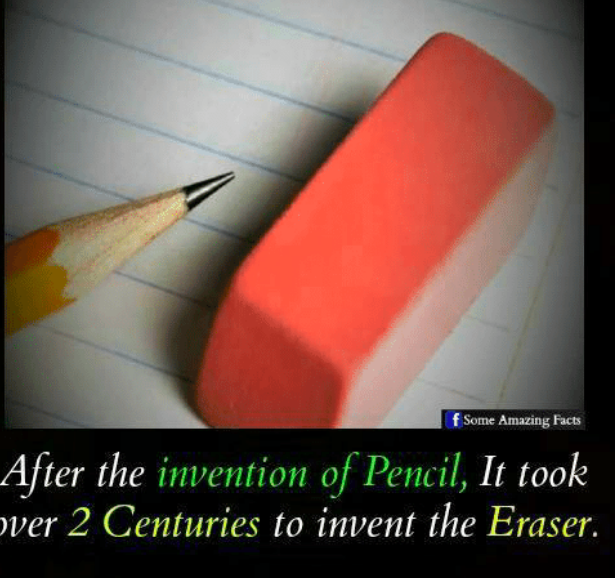
Ko ia kāhore nei i rapu, tē kitea.
He who does not seek, will not find.
Kia ora. I hope you have all taken the time to work on your visual glossaries of inventions and innovations and to watch last weeks video and complete the work on google classroom. This week, we are going to continue our research on innovations and inventions. We are going to look at a piece of technology and see if we think it is an invention or an innovation.
Thank you for completing the word banks for invention (14 students) here is the word cloud these words created;
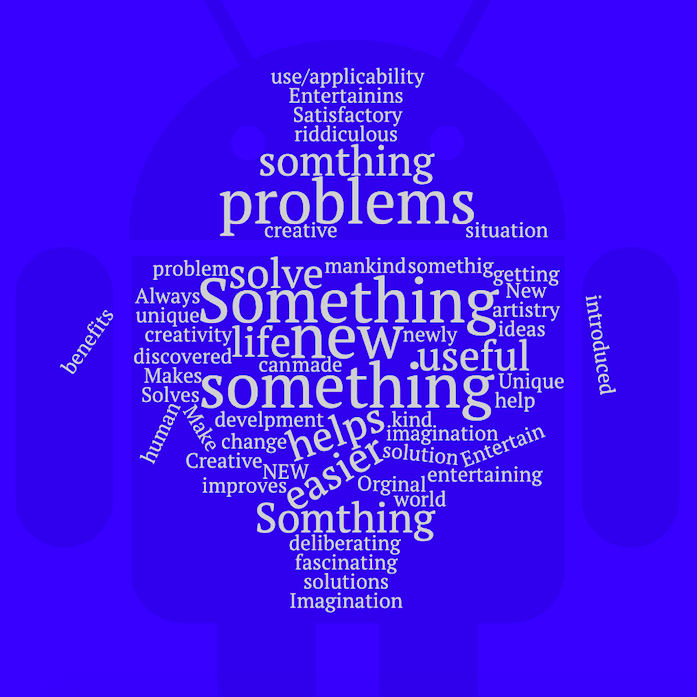
And here is the word cloud for innovation
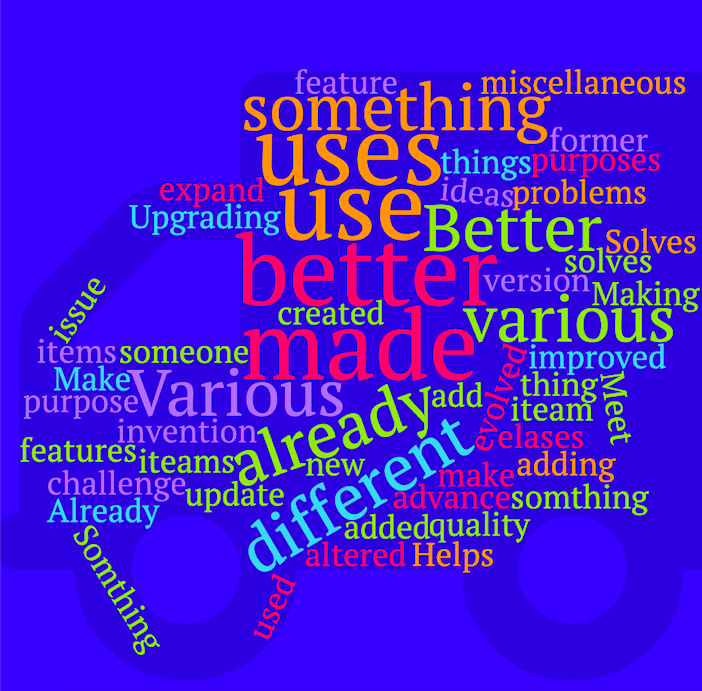
We will have a google meet at 11 a.m. on Monday to discuss this weeks work. Please check your emails for the invitation on Monday.
Learning Intentions
- Understand how exploration and innovation create opportunities and challenges for people, places, and environments.
- Understand that events have causes and effects.
- We are EXPLORING how the historical context of an invention influences the discovery
- We are EXPLORING the term Chronology and History
- We are EXPLORING Roman numerals
Success Criteria: I can/have...
- describe the difference between an invention and an innovation
- categorise a piece of technology onto invention or innovation
- discuss the reasons for my categorisaion
Activities:
- Use the resouces below to refresh your knowledge of a Yike Bike
- Identify the features of the YikeBike. How is it the same as or different to other bicycles? Refer to the Bicycle designs over time image to help promote thinking, or you could Google ‘bicycle images’ to create an image gallery of different types of bicycles and compare the YikeBike to these. Add the features you identify to the document in Google Classrooom
- Read the article Radical bike redesign, which explains some of the design detail of the YikeBike. More information on the design and technical detail can be found on the YikeBike website (www.yikebike.com). The YikeBike has won many awards including, shortly after it was released, being listed in TIME magazine’s 50 Best Inventions of 2009. Record any new information onto your document
- In this article, it is named as an invention and then described as innovative bicycle design. Write a paragraph or two to persuade that the Yike Bike is either an innovation or an invention.
Homework:
Write here...EXPLORE / TŪHURA learning intentions:
- We are EXPLORING the characteristics of innovation and the characteristics of invention
- We are classifying technological interventions as innovations or inventions and justifying our classifications
-
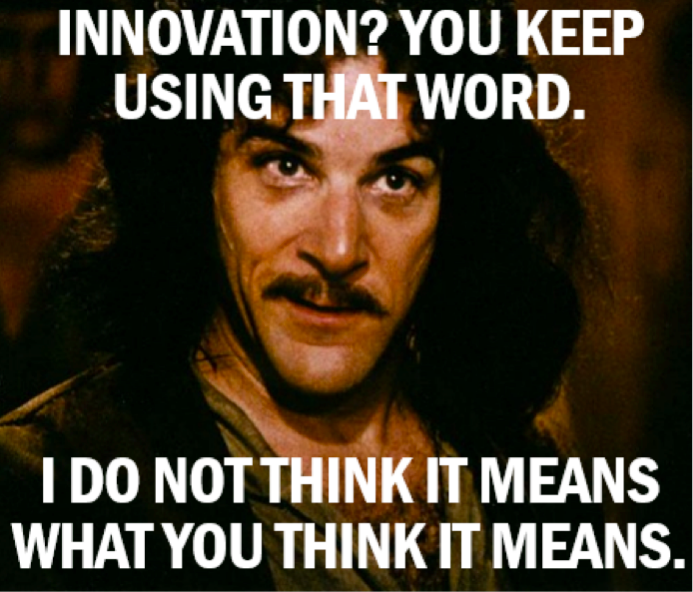
E tū ki te kei o te waka, kia pākia koe e ngā ngaru o te wā
Stand at the stern of the canoe and feel the spray of the future biting at your face
Kia ora. Welcome back. We have been innovating in education all year - what are some of the ways we have had to change to meet a need or new set of conditions? This week, you are going to share your presentations about Yike Bikes and traditional bicycles. We will then brainstorm a list on possible inventions/innovations and you will be able to independently research and present your findings - Invention or Innovation.
Success Criteria: I can/have...
- describe the difference between an invention and an innovation
- categorise a piece of technology onto invention or innovation
- discuss the reasons for my categorisaion
Activities:
- Small group presentation of Yike Bike research
- Whole class brainstorm of potential research invention/innovation
- Independent research
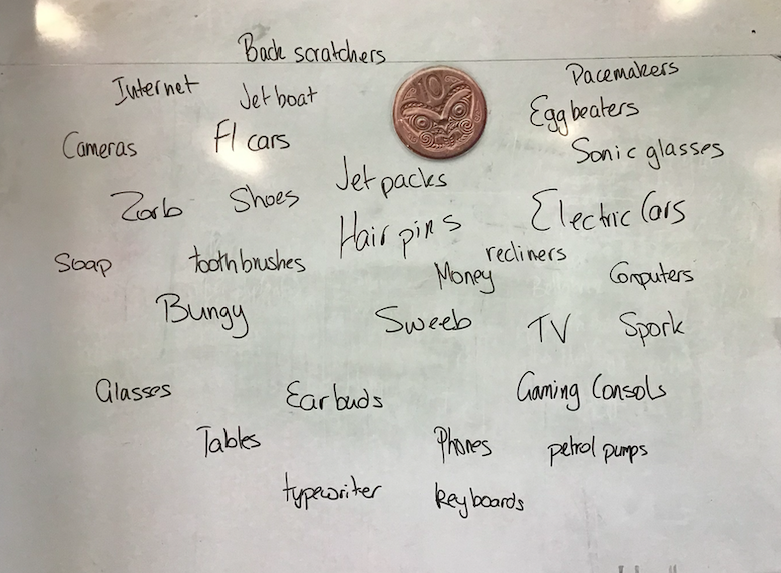
Homework:
Write here...FOCUS / ARONGA learning intentions:
- We are FOCUSING on New Zealand technology and describing the process of design of either a new invention or an innovation on existing technology
-
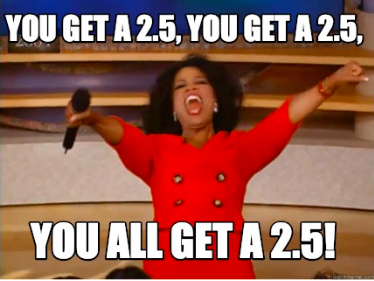
Kohikohia ngā kākano, whakaritea te pārekereke, kia puāwai ngā hua
Gather the seeds, prepare the seedbed carefully, and you will be gifted with an abundance of food
Kia ora, we have another week at Alert Level 2.5. Can you imagine what you would have thought last year if someone had told you we would be wearing masks when we went out in public, or that "social distancing" would be a thing, or even that you would spend weeks learning on-line at home? The new normal we have all had to get used to is really something, and you have all shown remarkable resilience and flexibility to make it work. Kai pai! This week, we will continue our exploration of innovation and invention and share our research in small groups.
Success Criteria: I can/have...
- describe the difference between an invention and an innovation
- categorise a piece of technology onto invention or innovation
- discuss the reasons for my categorisaion
Activities:
- Small group presentation of research project
- Identification of time periods of innovation/invention (what conditions (globally or locally) lead to an invention/innovation mindset
- Timeline creation
Homework:
Write here...FOCUS / ARONGA learning intentions:
- We are FOCUSING on New Zealand technology and describing the process of design of either a new invention or an innovation on existing technology
-
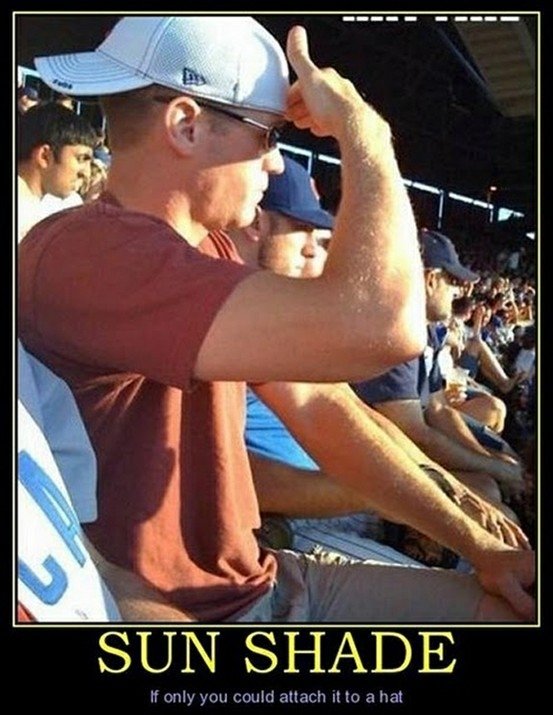
He kura tangata – He kura whānau
A person educated is a community educated
Kia ora. How are you going on your timelines? Have you remember to use roman numerals for your key dates? Remember each moment of inventiveness/innovation you have identified needs to have information about 2-3 key inventions/innovations of that time. If you can, include some information about the inventor too. We will be using the timeline to write some generalisations about the conditions where inventions/innovations thrive.
Success Criteria: I can/have...
- describe the difference between an invention and an innovation
- categorise a piece of technology onto invention or innovation
- discuss the reasons for my categorisaion
Activities:
- dentification of time periods of innovation/invention (what conditions (globally or locally) lead to an invention/innovation mindset
- Timeline creation
Homework:
Write here...PLAN & DO / WHAKAMAHI learning intentions:
- We are PLANNING a technological intervention so that we can solve an identified problem. We are applying the characteristics of innovation and invention in our design and construction.
-
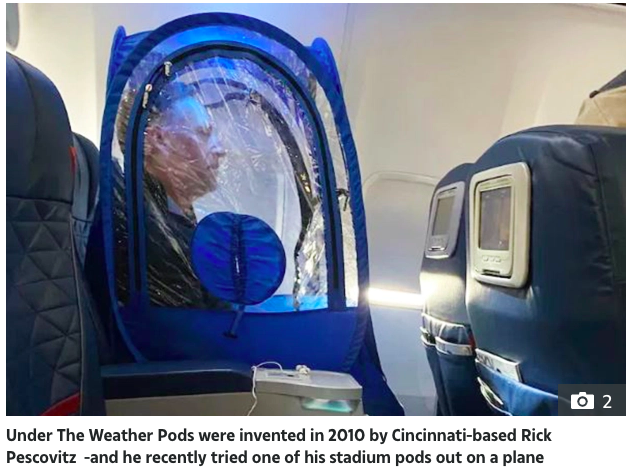
Te kaha me te wairua
Energy flows where attention goes
Kia ora. I was thinking about the age of inventions - and wondering how history would record our current inventions and innovations. As humankind is working in our new normal, life with COVID-19, many people are inventing, innovating and adapting to try and keep us safe. What has been your "favourite" innovation or invention to do with the pandemic?
Success Criteria: I can/have...
- describe the difference between an invention and an innovation
- categorise a piece of technology onto invention or innovation
- discuss the reasons for my categorisaion
Activities:
- Identification of time periods of innovation/invention (what conditions (globally or locally) lead to an invention/innovation mindset
- Timeline creation
- Share timeline in small groups
- Research inventions and innovations related to COVID-19
Homework:
Write here...
PLAN & DO / WHAKAMAHI learning intentions:
- We are PLANNING a technological intervention so that we can solve an identified problem. We are applying the characteristics of innovation and invention in our design and construction.
-
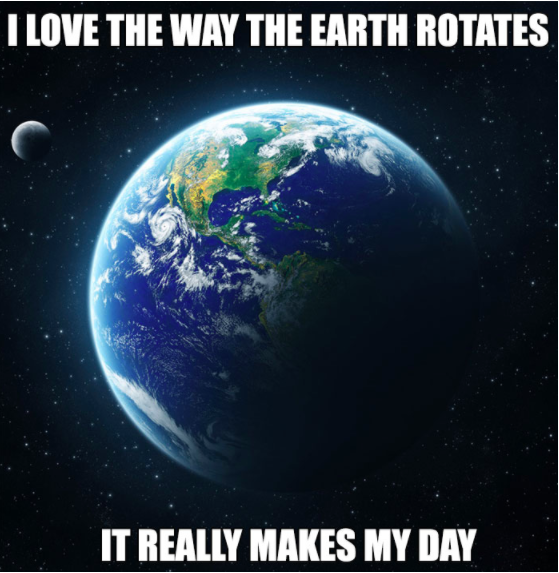
Ko te pae tāwhiti, whāia kia tata. Ko te pae tata, whakamaua kia tina.
Seek out distant horizons and cherish those you attain.
Kia ora. Welcome back to Term 4. Last term we looked at inventions and innovations. Many times, these inventions and innovations helped us to survive and thrive, they met a need or an opportunity and improved our lives. Sometimes, the invention or innovation benefited our leisure time - in New Zealand we create many different ways to get the adrenaline flowing. Sometimes thought, the invention or innovation is based around an idea or a wondering. Is the moon made of cheese? Could we live at the bottom of the ocean? Is there other life out here? This term our contect is "Out of this World". We are going to look at the Space Race, and what that means for us and our planet. should we be looking for somewhere to ecape to? Should we be fixing what we have damaged? Why was the 1960's such a time of development in looking beyond our planet?
Success Criteria: I can/have...
- Identify key people involved in the 1950-60s Space Race
- Create a time line of events leading up to the moon landing
- Describe some of the environmental impacts of space exploration
- Explain some elements of the current situation in space exploration
Activities:
- Read text "Sky High"
- Create dot-jot notes from the text (in exercise books)
- Read "The Space Race"
- Create dot-jot notes from the text (in exercise books)
Homework:
Complete dot jot notesEXPLORE / TŪHURA learning intentions:
- We are EXPLORING the developments used to observe or explore space to illustrate how our knowledge of the universe has evolved over time.
-
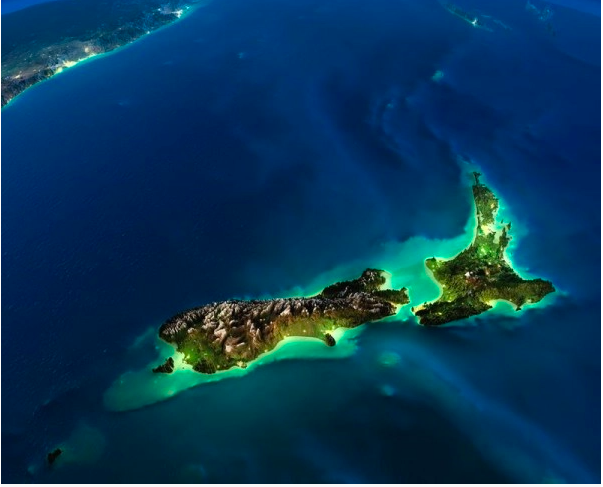
Tukua kia tu takitahi nga whetu o te rangi.
Let each star in the sky shine its own light.
Kia ora. Well done on your note taking last week. Being able to take effective notes is a skill that will be invaluable both now and in the future. This week, we are going to use the notes we have taken to create our own writing. By going from source information to notes and then on to creating our own texts, we will ensure that we are using our own words and understanding in our writing.
Success Criteria: I can/have...
- Create notes using a dot-jot method
- Use notes to inform my own writing
- Explain the history of rockets
Activities:
- Use notes to plan writing
- Write explanation about history of rockets
Homework:
Write here...EXPLORE / TŪHURA learning intentions:
- We are EXPLORING the developments used to observe or explore space to illustrate how our knowledge of the universe has evolved over time.
-
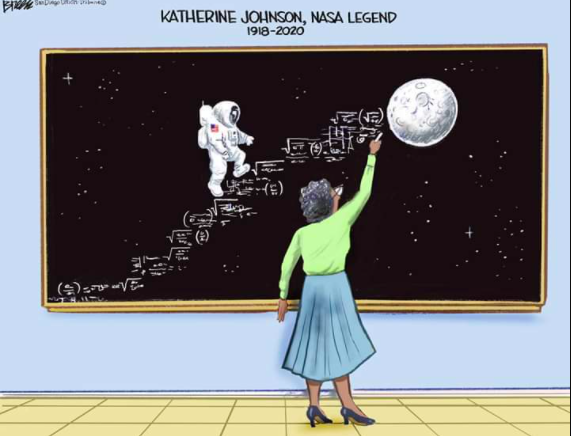
Mā te huruhuru ka rere te manu
Adorn the bird with feathers so it may soar.
Kia ora. Last week we looked at Yuri Garagin - the first man in space. This week, we are going to look at the lead up to the first man on the moon. This is a moment that was broadcast around the world and inspired many young children to look to the sky and dream of becoming astronauts. I always remember the date the Apollo spacecraft left the earth as it was on my birthday - it was also Jayda's birthday - how special are we! 4 days later Neil Armstrong made that '.....one small step.....'
Success Criteria: I can/have...
- Create notes using a dot-jot method
- Use notes to inform my own writing
- Explain the history of the race to the moon
Activities:
- Use notes to plan writing
- Write explanation about history of the race to the moon
Homework:
Write here...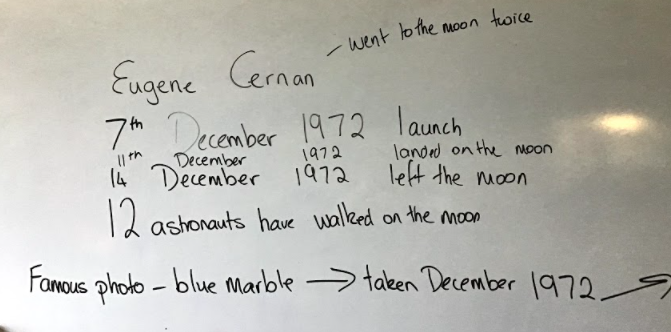
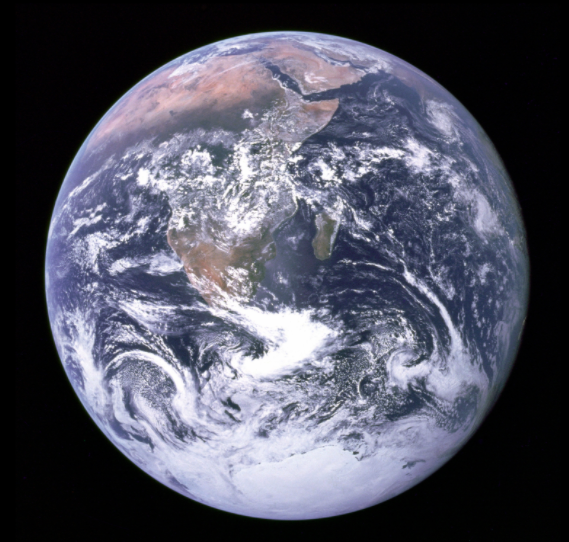
EXPLORE / TŪHURA learning intentions:
- We are EXPLORING the developments used to observe or explore space to illustrate how our knowledge of the universe has evolved over time.
-
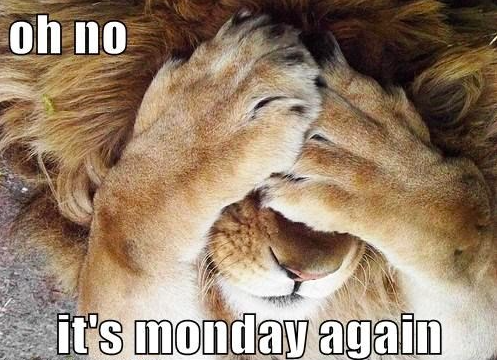
Mā te kimi ka kite, Mā te kite ka mōhio, Mā te mōhio ka mārama
Seek and discover. Discover and know. Know and become enlightened.
Kia ora. We have a really busy week ahead of us. Tuesday is athletics day, so remember the sunblock! This week we are going to view a movie, and learn some more about the time period around getting the first man to the moon. We have been making notes based on written text, we will now expand on our notes using the visual text.
Success Criteria: I can/have...
- Make notes from a visual presentation
Activities:
- View film "Hidden Figures"
- Review your dot jot notes about "One small step" and add new information/detail
Homework:
Write here...FOCUS / ARONGA learning intentions:
- We are FOCUSINGon people involved in the Space Race and identifying the challenges and oportunities they encountered that led to the involvement
- We are FOCUSSING on the environment in which the Space Race occured, in terms of people, place and environment
-
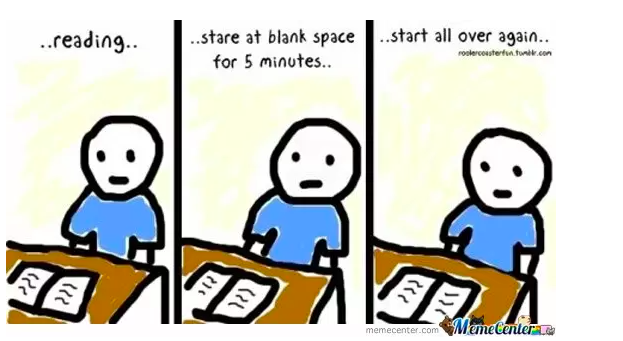
Mau ano e to mai te ika ki a koe. Ki te tino wawata koe ki te ika ka haere mai ki a koe!
You create your own luck. If you wish it the fish will come!
Kia ora. Welcome to week 5. Last week we watch the movie "Hidden Figures" and saw the time and place that space race occured in. This was a time of massive upheaval for America. We are looking at how Innovation and Exploration create opportunities and challenges for people, places, and environments. What challenges and opportunities did you see in the film? Were these positive or negative for the environment? What else was happening around the word during this time and how did this impact on the mood/will/focus of people?
Success Criteria: I can/have...
- Detail innovations and inventions associated with the "Space Race"
- Identify challenges and opportunities in 1960s USA
- Describe impact of actions on the environment and place
Activities:
- In small groups (3), create a slideshow that backgrounds the innovations and inventions of the space race (5 slides)
- Using Hidden Figures to inform your understanding, list 5 challenges and 5 opportunities linked to the space race (2 slides)
- Create a Venn diagram that shows the impact on people, place and enviroment (1 slide)- your venn diagram will have 3 interlinking circles
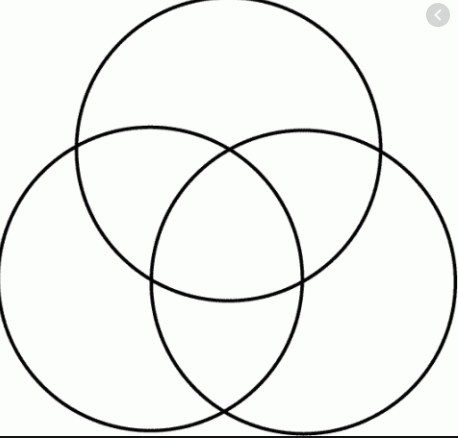
Homework:
Write here...FOCUS / ARONGA learning intentions:
- We are FOCUSINGon people involved in the Space Race and identifying the challenges and oportunities they encountered that led to the involvement
- We are FOCUSSING on the environment in which the Space Race occured, in terms of people, place and environment
-

Kia hora te marino, kia whakapapa pounamu te moana, kia tere te kārohirohi i mua i tō huarahi.
May peace be widespread, may the sea glisten like greenstone, and may the shimmer of light guide you on your way.
Kia ora. We have a very busy week this week - you have the bike riding course and a teacher only day on Thursday, so we will have to really knuckle down in Mondays session to get our work completed.
Success Criteria: I can/have...
- Detail innovations and inventions associated with the "Space Race"
- Identify challenges and opportunities in 1960s USA
- Describe impact of actions on the environment and place
Activities:
In small groups (3), create a slideshow that backgrounds the innovations and inventions of the space race (5 slides)
Using Hidden Figures to inform your understanding, list 5 challenges and 5 opportunities linked to the space race (2 slides)
Create a Venn diagram that shows the impact on people, place and enviroment (1 slide)- your venn diagram will have 3 interlinking circles
Homework:
Write here...FOCUS / ARONGA learning intentions:
- We are FOCUSINGon people involved in the Space Race and identifying the challenges and oportunities they encountered that led to the involvement
- We are FOCUSSING on the environment in which the Space Race occured, in terms of people, place and environment
-

Kua hua te mārama
The moon is full.
Kia ora. It's going to be a quiet week this week, with the year 10s on work experience. Year 6 students are visiting on Thursday, and you are off to the StarDome on Friday, so we still have quite a bit to do! This week you are going to choose someone involved in the space race and write a biography for them. You will need to think about when and where they were born, went to school, worked etc. as well as research their achievements and maybe the challenges they faced along the way.
Success Criteria: I can/have...
- Identify a person involved in the space race
- Research this person
- Record information using dot-jot notes
- Write a biography using the conventions of biography writing
Activities:
- Brainstorm people involved in the space race in small groups
- Select a person to research (should not be the same as anyone else in your group)
- Locate information about your person and record using dot-jot notes
- Create a biography of your chosen person
- Create a poster to celebrate their greatest achievement (in your opinion)
Homework:
Write here...PLAN & DO / WHAKAMAHI learning intentions:
- We are PLANNING a poster that presents the key moment in the life of a person associated with the Space Race so that we can share our understanding of how innovations have created opportunities for an individual and a society
-
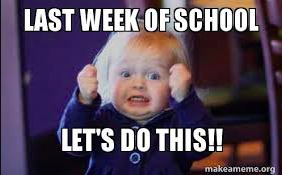
Tungia te ururoa, kia tupu whakaritorito te tupu a te harakeke.
Set the flax bush alight and the new shoots will spring up.
PLAN & DO / WHAKAMAHI learning intentions:
- We are PLANNING a poster that presents the key moment in the life of a person associated with the Space Race so that we can share our understanding of how innovations have created opportunities for an individual and a society

